1lumen selects and reviews products personally. We may earn affiliate commissions through our links, which help support our testing.
Acebeam X75 review: 80000 lumen flashlight
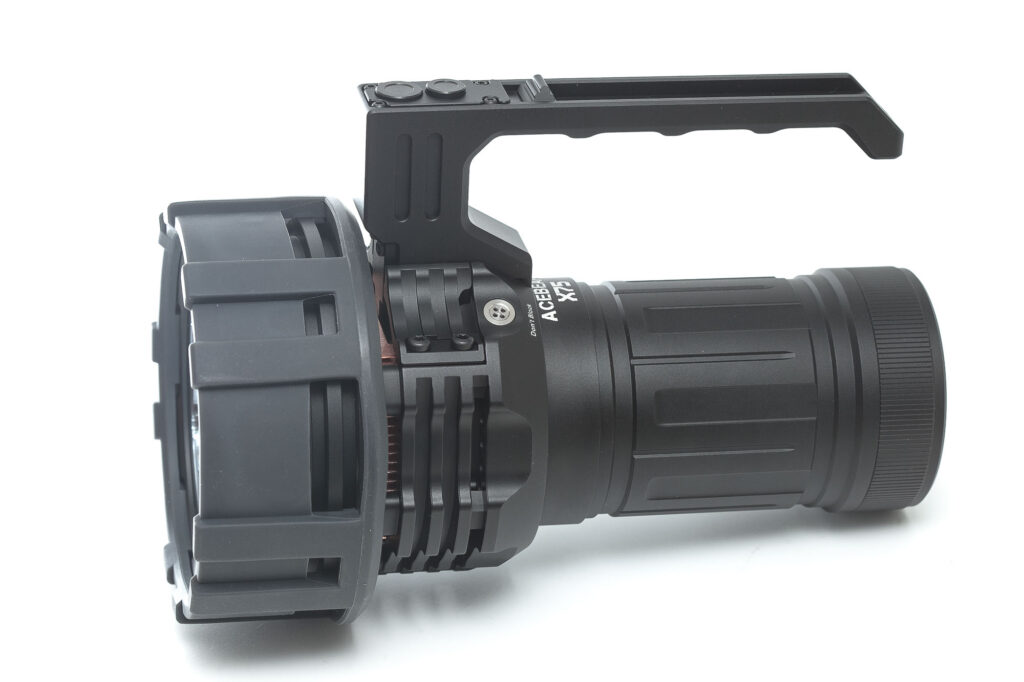
Acebeam X75 specifications
| Brand/model | Acebeam X75 |
|---|---|
| LED | CREE XHP70.2 (5000K) |
| Category | High output, lumenmonster |
| Max. output | 75,000 lm |
| Max. beam intensity | 330,625 cd |
| Max. beam distance | 1150 meters |
| Battery config. | battery pack with 4*21700 |
| Onboard charging | USB-C (65W) |
| Modes | 6 |
| Blinkies | Strobe |
| Reflector | Orange-peel |
| Waterproof | IP68 |
| Review date | September 2022 |
Acebeam X75 test:
If you’re looking for an extremely bright flashlight, you probably have encountered many crazy (and fake) output claims. This goes for Amazon, eBay, AliExpress, and the like.
Congratulations, you finally made it to the right side of the flashlight world, where we test and see if flashlights really live up to their claims. And most of the ones you find on eBay, Amazon etc.. don’t! Surprised right?
This time, we are reviewing a real high-output flashlight, namely the Acebeam X75. It’s a medium-sized flashlight with a claimed output of 80,000 lumens (with cool white LEDs) or 75,000 lumens (with neutral white LEDs).
And it’s 1 thing to make an extremely bright flashlight and another to make it trustable and innovative. And Acebeam delivered!
In their advertisements, they claim a very high output with a cooling fan, fast charging (65 watts), high (98%) efficient constant current driver, and many more features. So yeah, I can’t wait to share my findings.
Package quality.
Unlike its predecessor, the Acebeam X70, the X75 comes in a normal carton box with the following inside:
- The flashlight: Acebeam X75
- USB-C PD 60W charger
- Spare fan with screws and mini wrench
- Silicone heat sleeve (for protection and heat indicator)
- Spare O-rings
- Warranty card
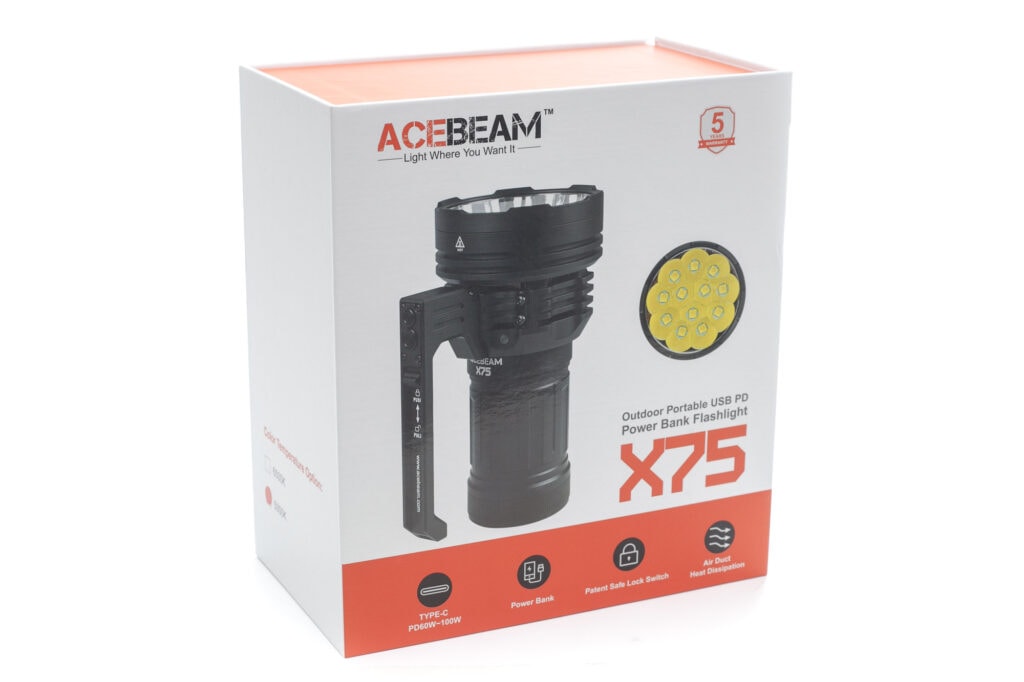
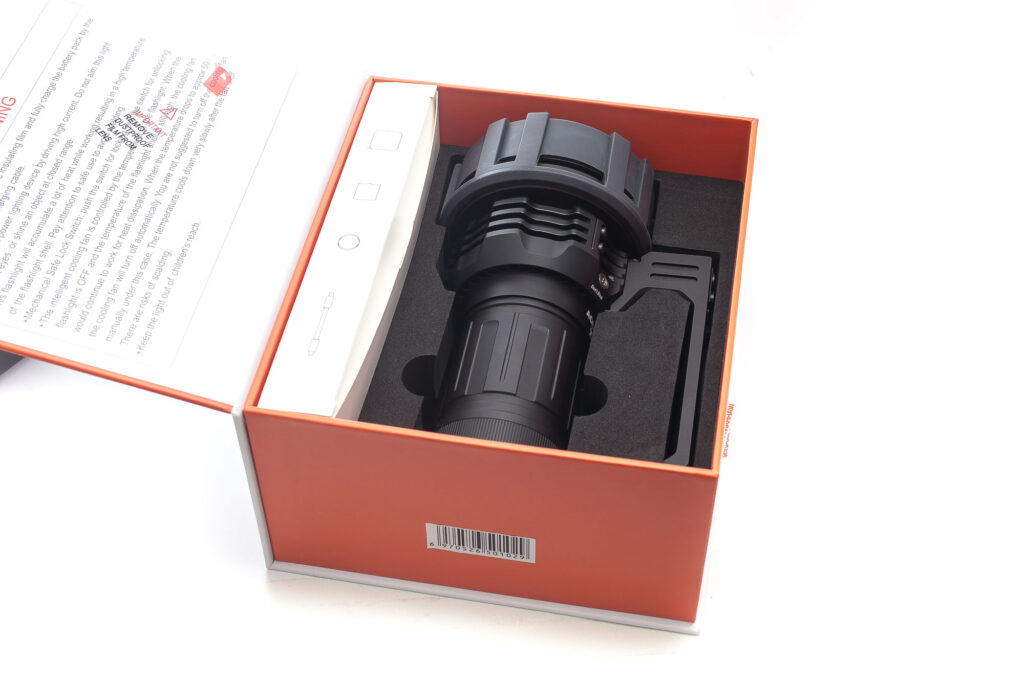
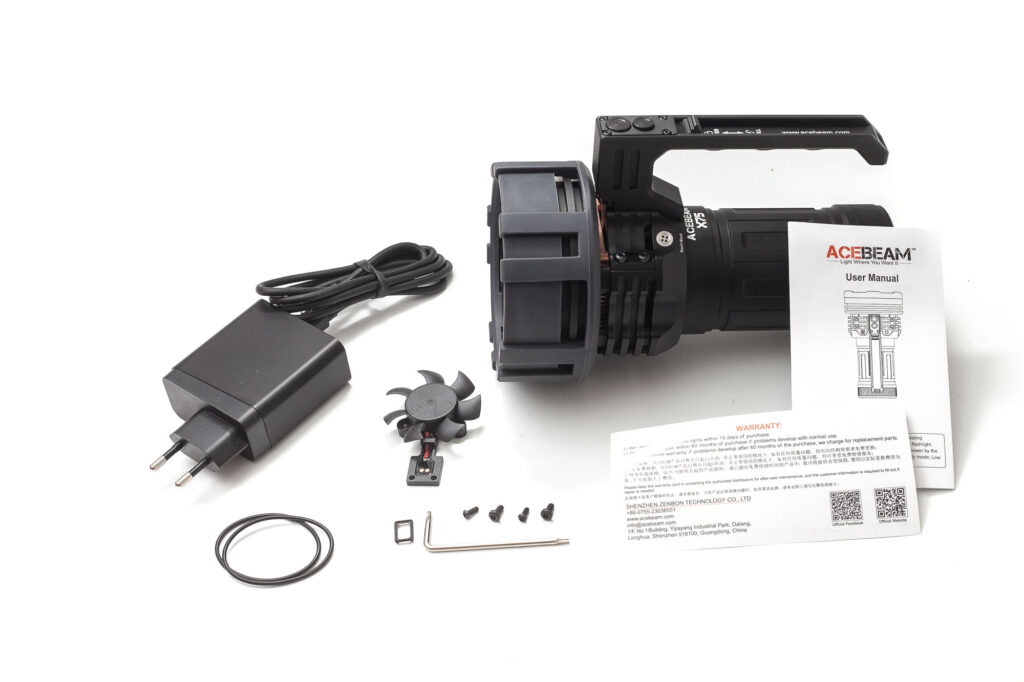
X75 Flashlight in use
Sometimes, you wonder whether a flashlight was made with any particular use case in mind. Things like the choice of UI, strobe mode in the main mode group, the size, the extremely quick drop in output, and so on.
The X75 is a high-power flashlight that can be great for walking around the farm, camping, exploring caves, and these types of tasks where you could use a lot of light at a close distance. And with the included tripod mount, you don’t even have to carry it all the time. It’s a little too heavy to carry for long walks with the dog, but the carry handle (with built-in switches) makes it easier to carry and use than some of its (weaker) competitors. And if you can find a large diffuser, you can make it tailstand, and use it as a table lamp (I don’t want to call it a candle, with 600+ lumens).
Using the X75 with its UI is pretty easy to understand. The handle has 3 switches: the main switch, an auxiliary switch, and a lockout switch. The front is a bit heavy, but the handle makes it nicely balanced, right where you put your index finger.
Of course, the lockout switch protects you from accidentally activating the light, while the main switch is for power and mode switching. The Auxiliary switch is to (de-)activate the built-in fan, as well as switch between ECO and POWER mode. (Which I don’t really recommend doing).
You can remove the handle to replace the fan, but you won’t be able to turn the light on/off or do anything else because everything is built into the handle.
The Auxiliary switch has the largest button and is located at the farthest end of the handle. The Main switch is smaller, sticks out a little more, and is closer to your hand. And Acebeam must have thought this through, like everything else in this light, but I don’t know if this was the best choice. I would probably have preferred the Main switch to be bigger. What do you think?
Acebeam also included a silicone heat sleeve that fits around the bezel. Again, Acebeam must have thought all these details through, because this is not just a normal silicon sleeve to protect your flashlight, it changes color when it heats up. I don’t really know the practicality of this, but there must be some. At least you wouldn’t burn your hands so easily. And I also figured that you can move the sleeve a bit more forward and backward so you have some extra protection.
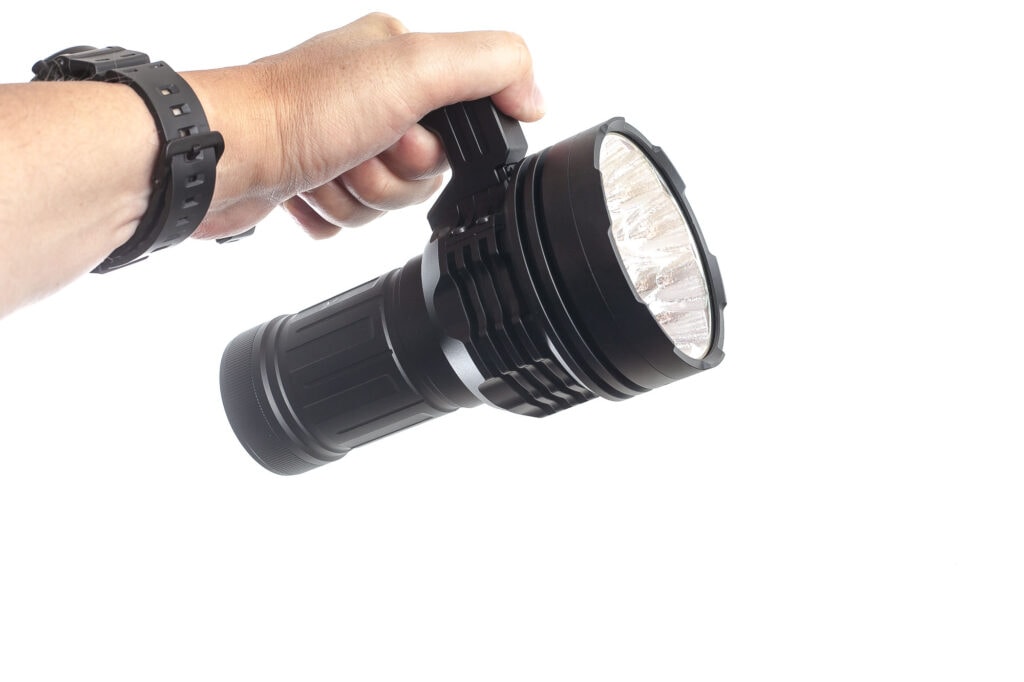
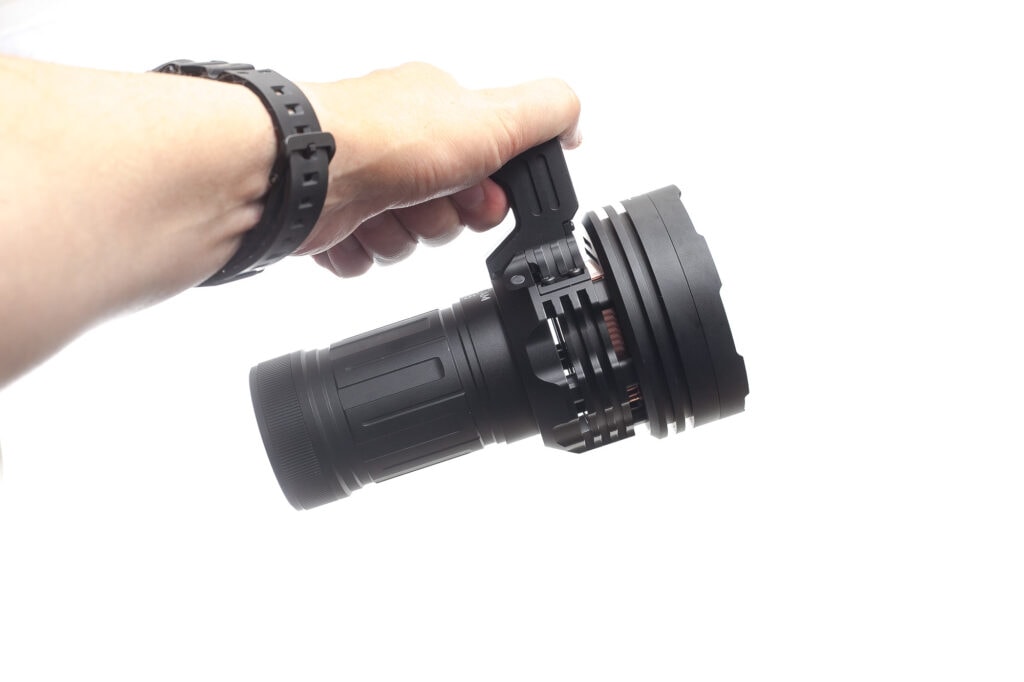
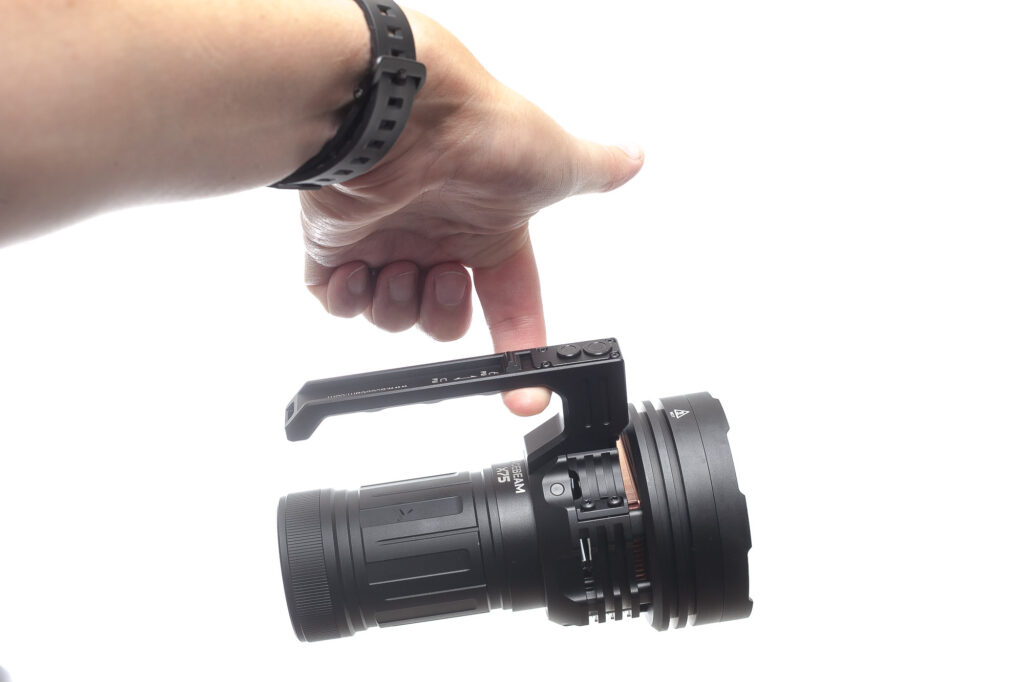
Build Quality, and Warranty
Acebeam is a well-known manufacturer that builds great flashlights; the X75 is no exception. It’s designed with lots of attention to detail, from the handle to the body, heat sinking, and basically everything you can think of. Well.. maybe…
I wonder if Acebeam will ever make a tiny switch in place of the carry handle. I mean, if the handle is great, perhaps you could replace it with a smaller piece of aluminum, with just the switches, right where the handle attaches to the body. Maybe people don’t like using the handle in certain cases (for example, if the light is connected to a tripod).
The handle is removable and electronically connected to the body with 5 little pins and an attached removable fan. The fan sits in front of a large heatsink with many heatsink fins, just like you find on computer CPU heatsinks. Amazing, and pretty smart.
I even saw a video posted where the X75 (with fan activated) was held underwater, and it kept running. That’s pretty fantastic. I would also not recommend doing that because the fan could potentially get stuck with dirt from inside the water.
Anyway, enough about all these details.
How about the warranty?
1. If the customer experiences any problems with an Acebeam product within 15 days of purchase, the dealer will replace that product.
2. If an Acebeam flashlight fails during normal use within a period of five years (60 months) of purchase, the dealer will repair or replace the flashlight with the same or similar model.
3. Acebeam flashlights enjoy a limited lifetime warranty – after 60 months the dealer will attempt to repair the flashlight for the cost of spare parts and shipping (i.e. no charge for labour).
Please note:
A: This warranty applies to Acebeam flashlights, headlamps, bike lights and camping lanterns, excluding lanterns with built-in batteries, purchased after 1 May 2016;
B: Rechargeable batteries, battery chargers, bike mounts, filters, remote pressure switches and lanterns with built-in batteries are warranted for a period of one year (12 months) from date of purchase;
C: Products purchased before 1 May 2016 and special offers may have different warranty terms;
D: The warranty does not cover damage or failure caused by:
– Rough usage or operation which does not comply with the user manual or product specifications;
– Battery leakage;
– Unauthorized disassembly, repair or modification;
– Defects or damaged caused by factors outside of Acebeam’s control.
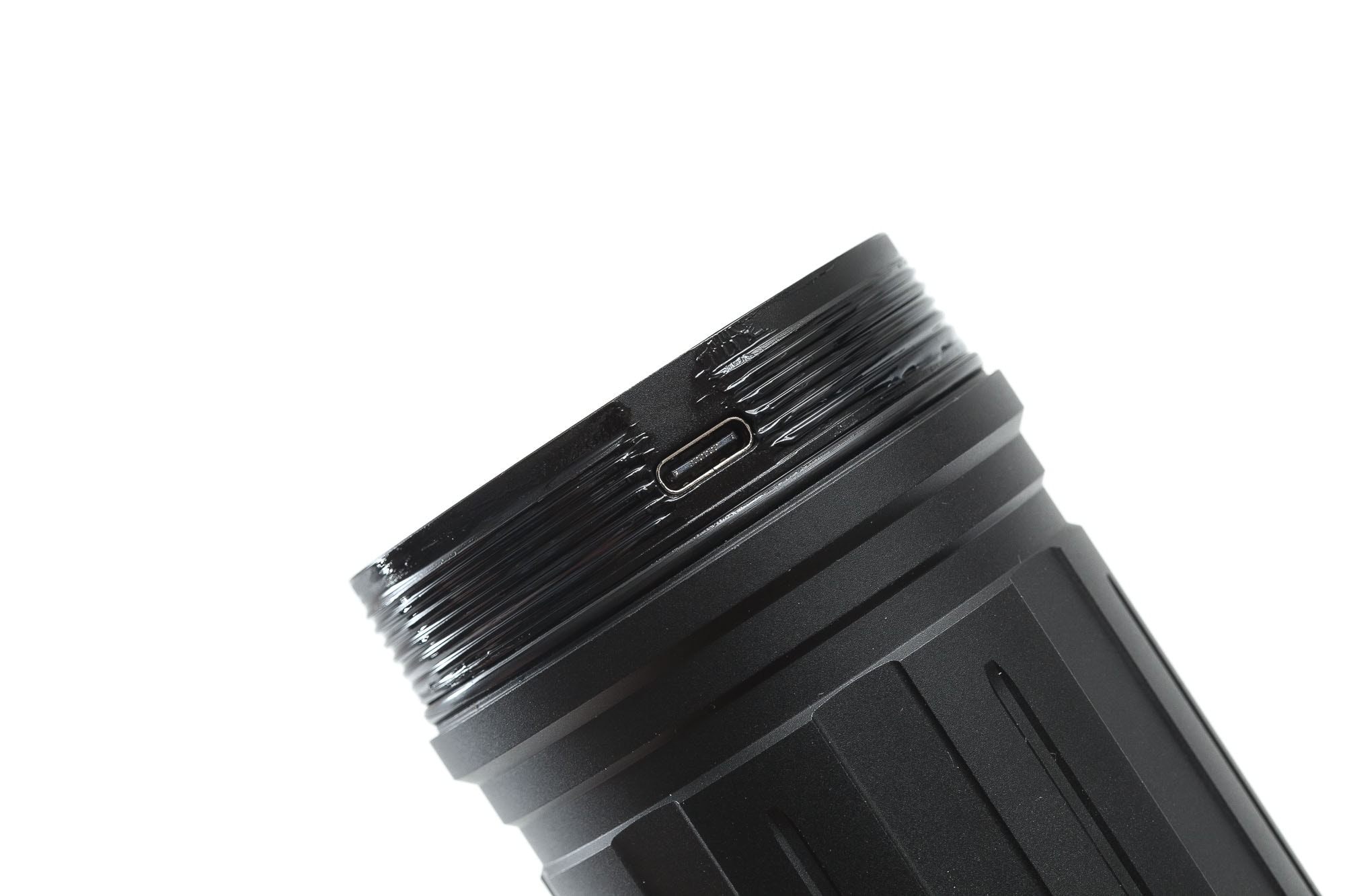
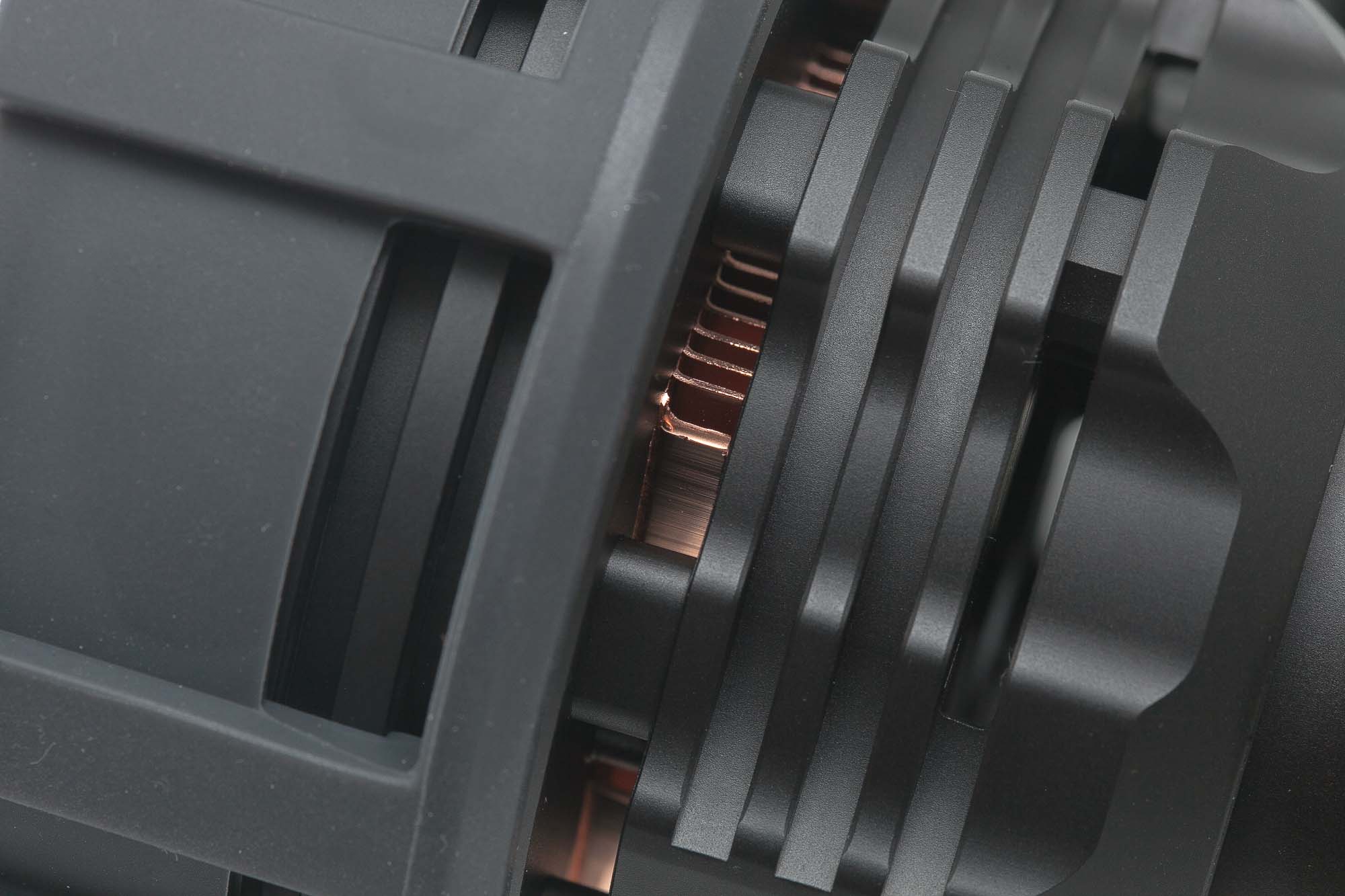
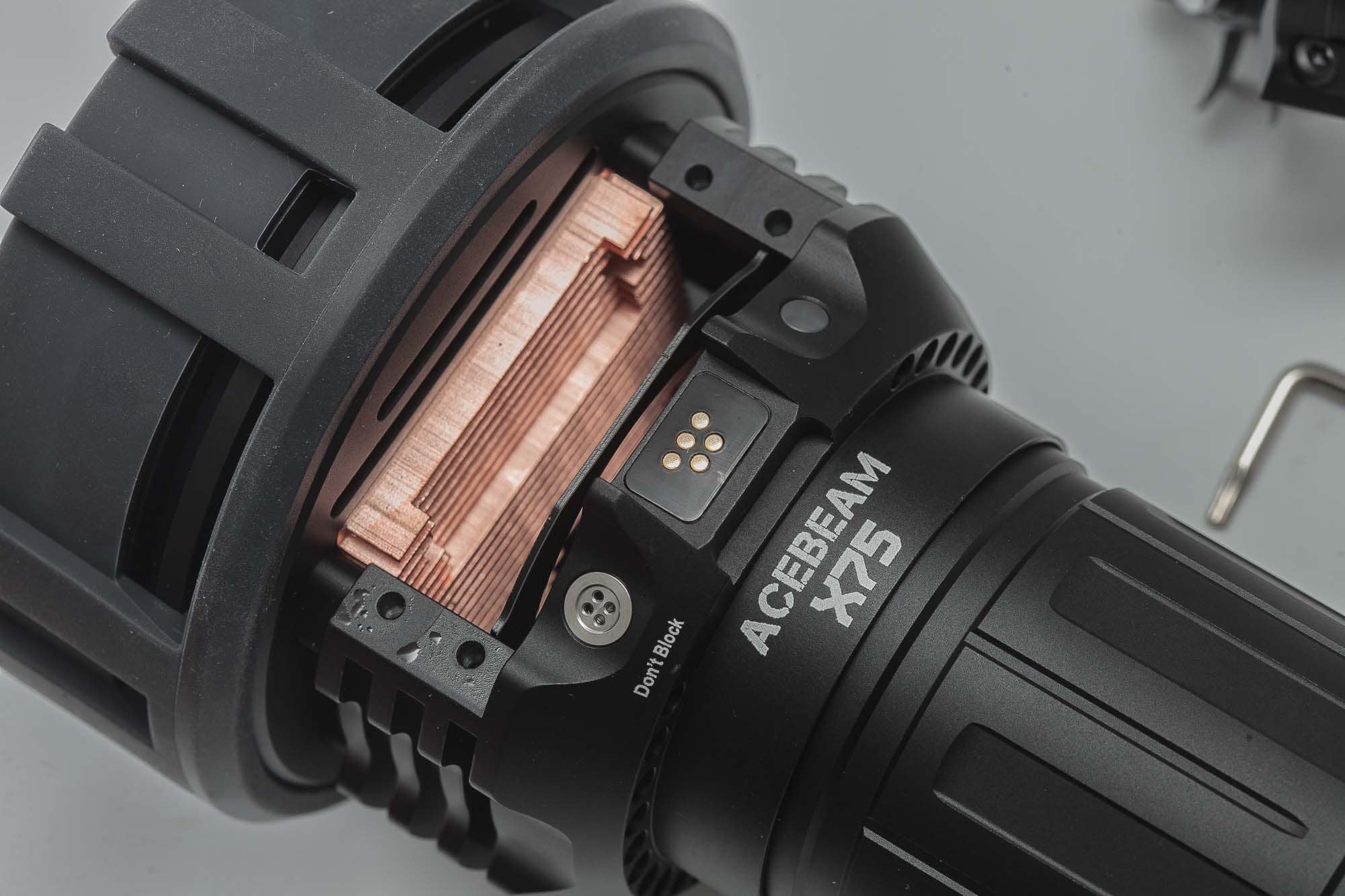
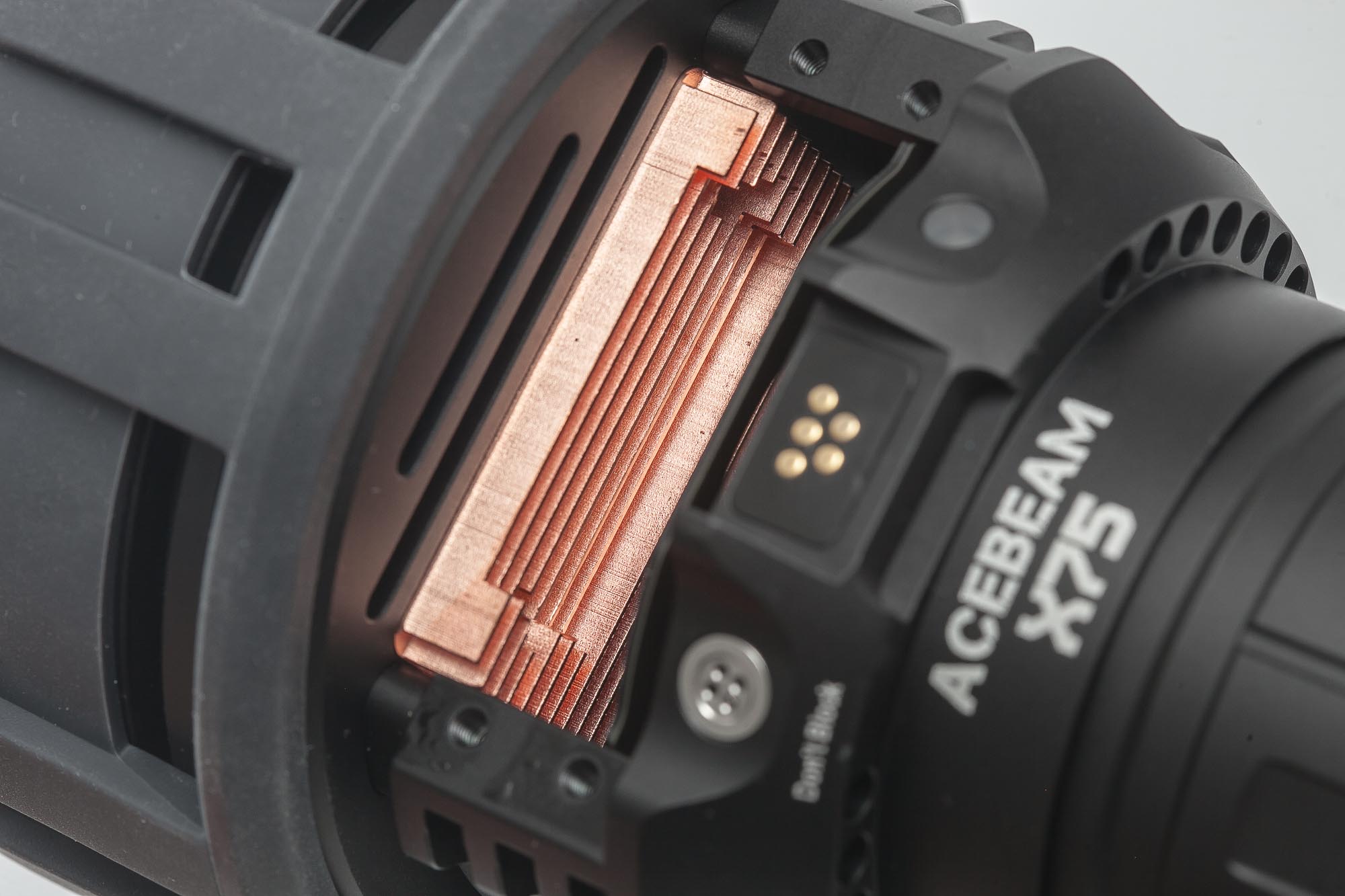
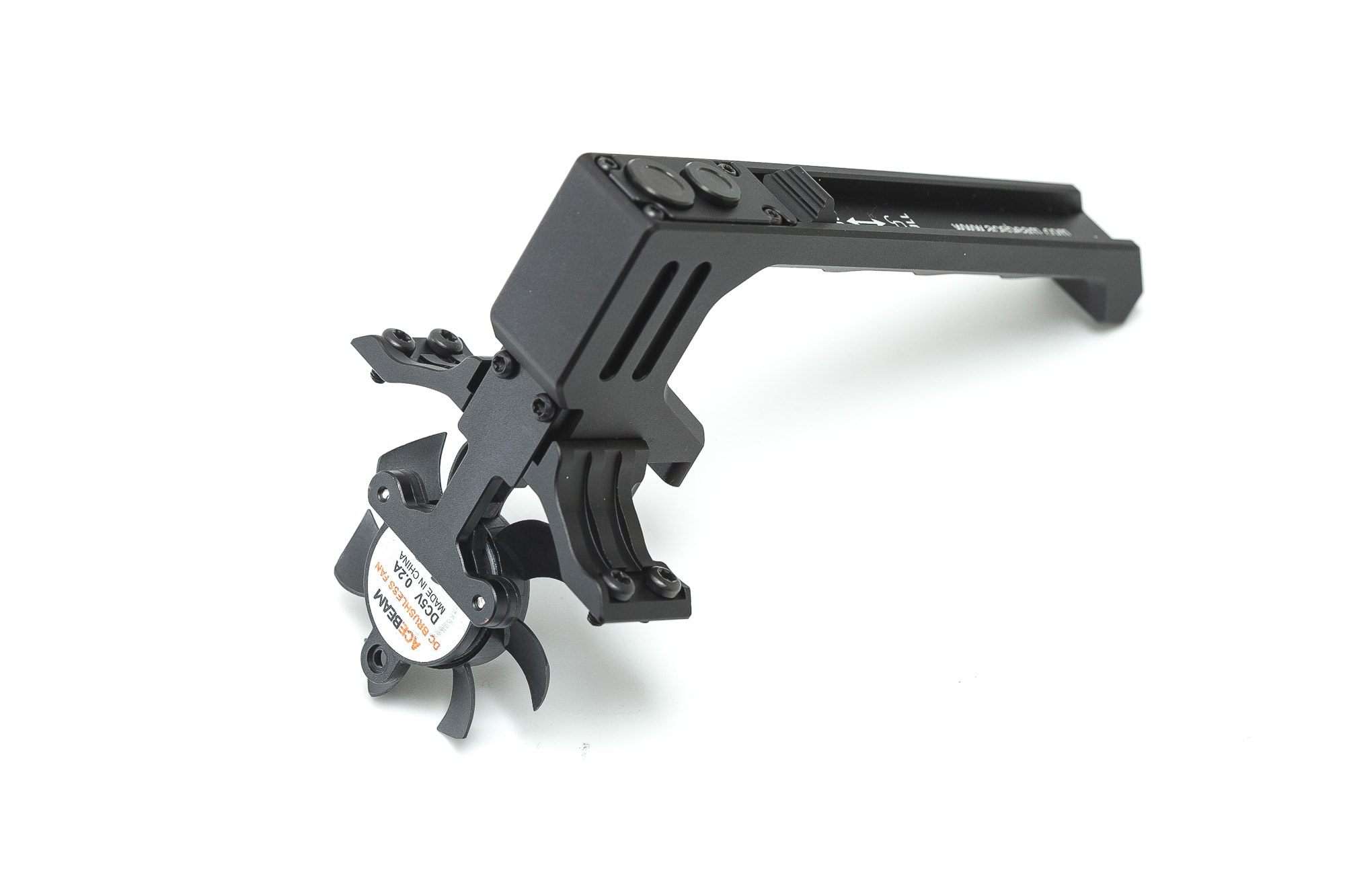
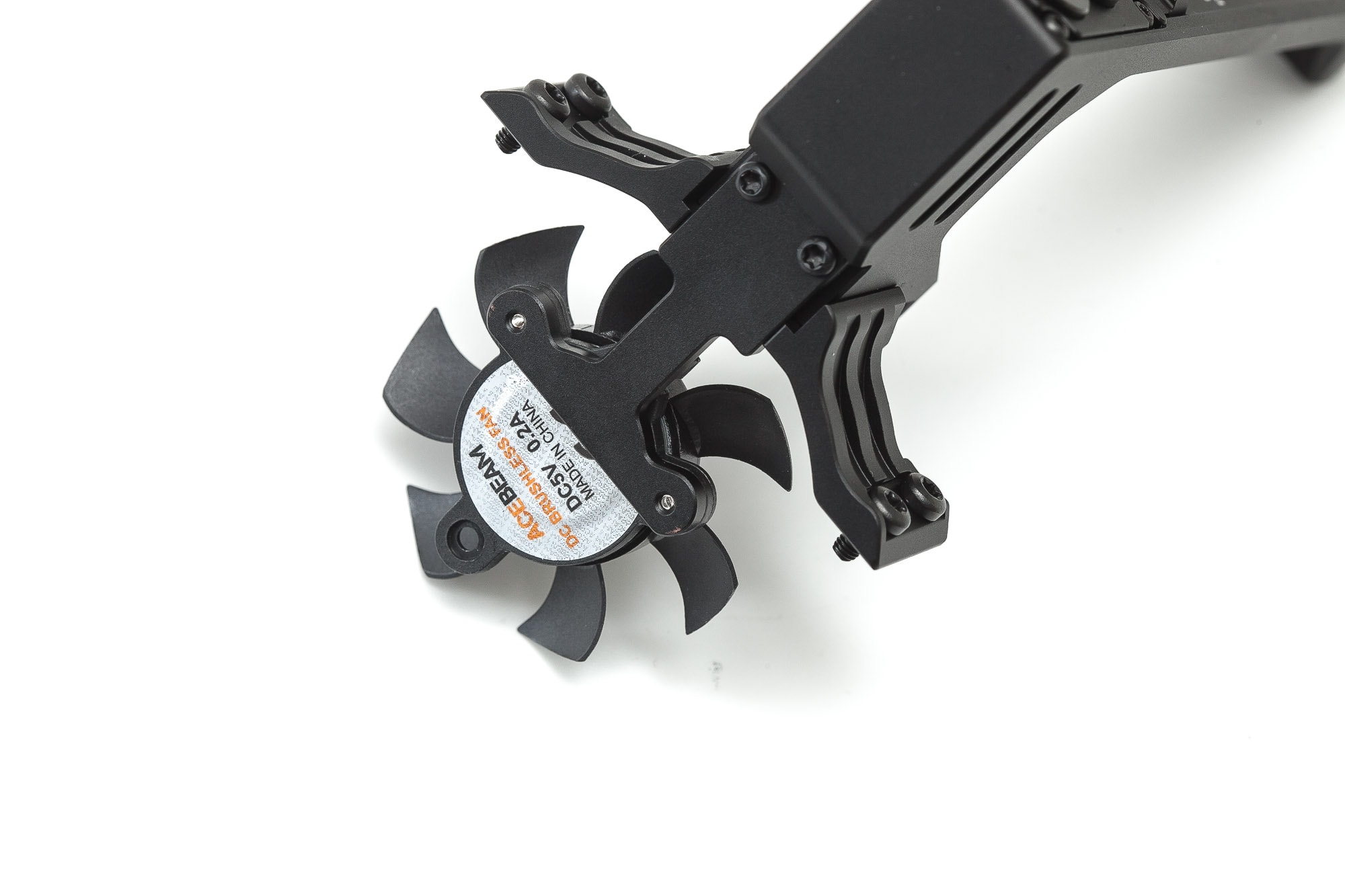
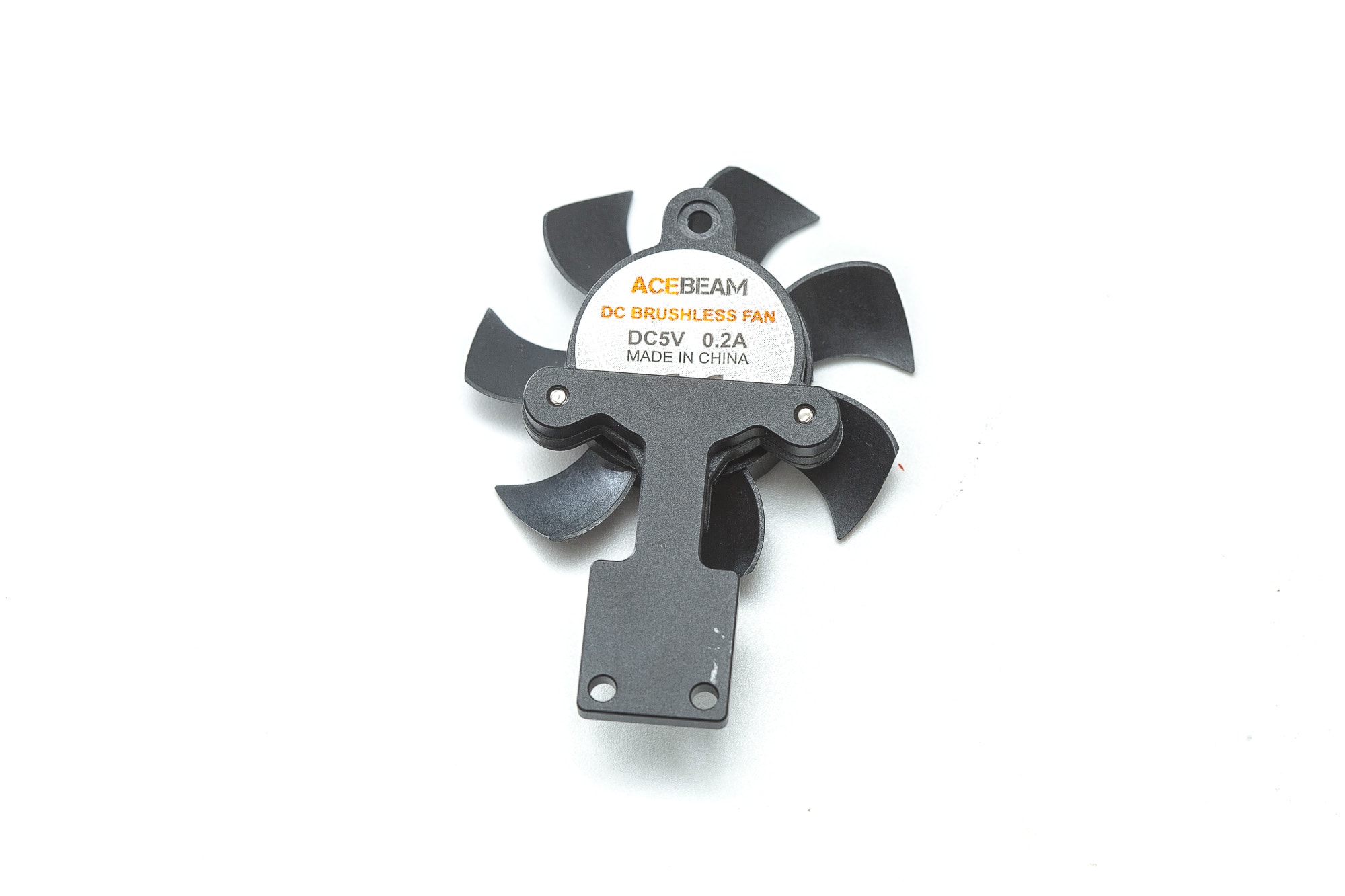
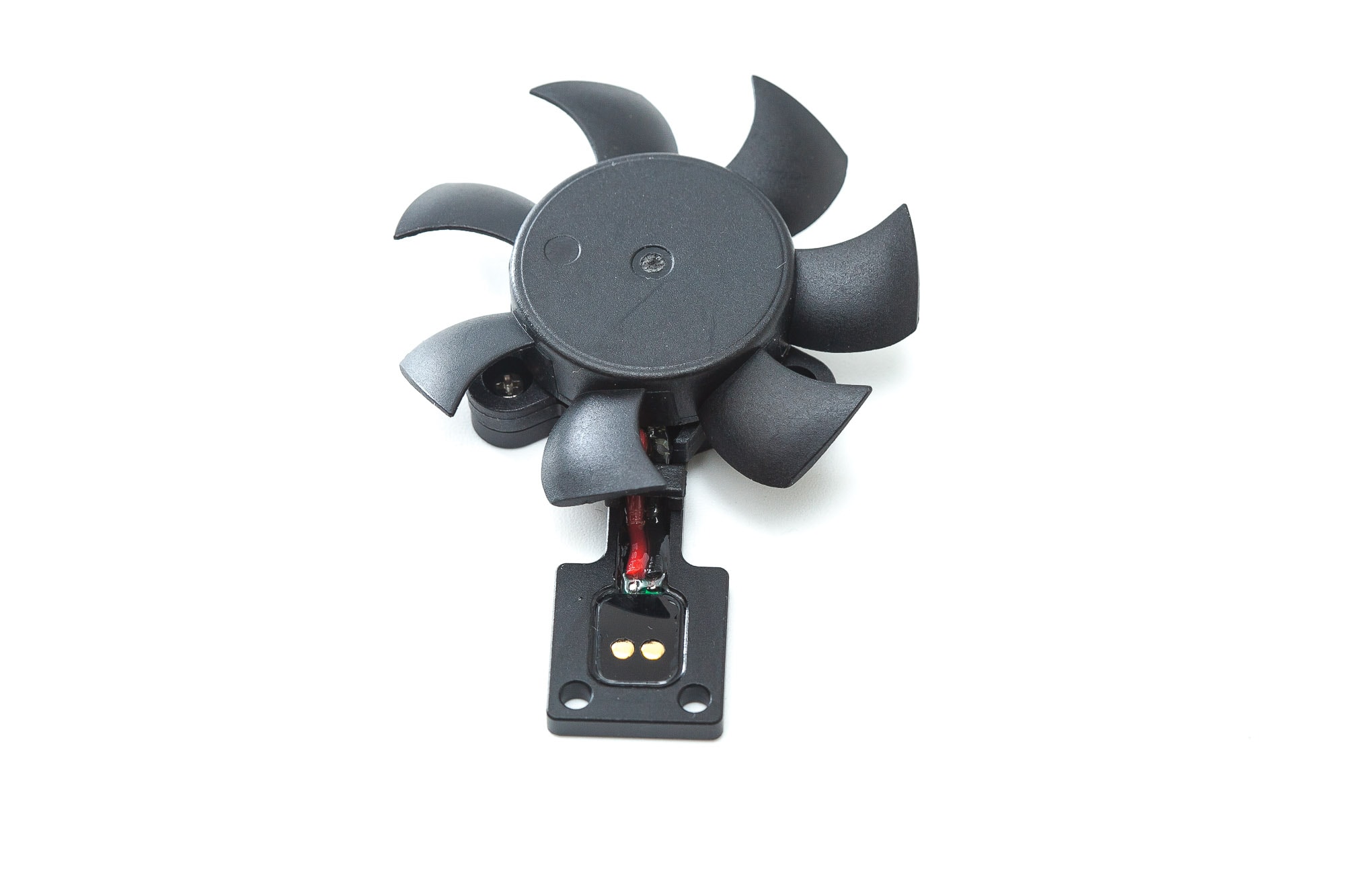
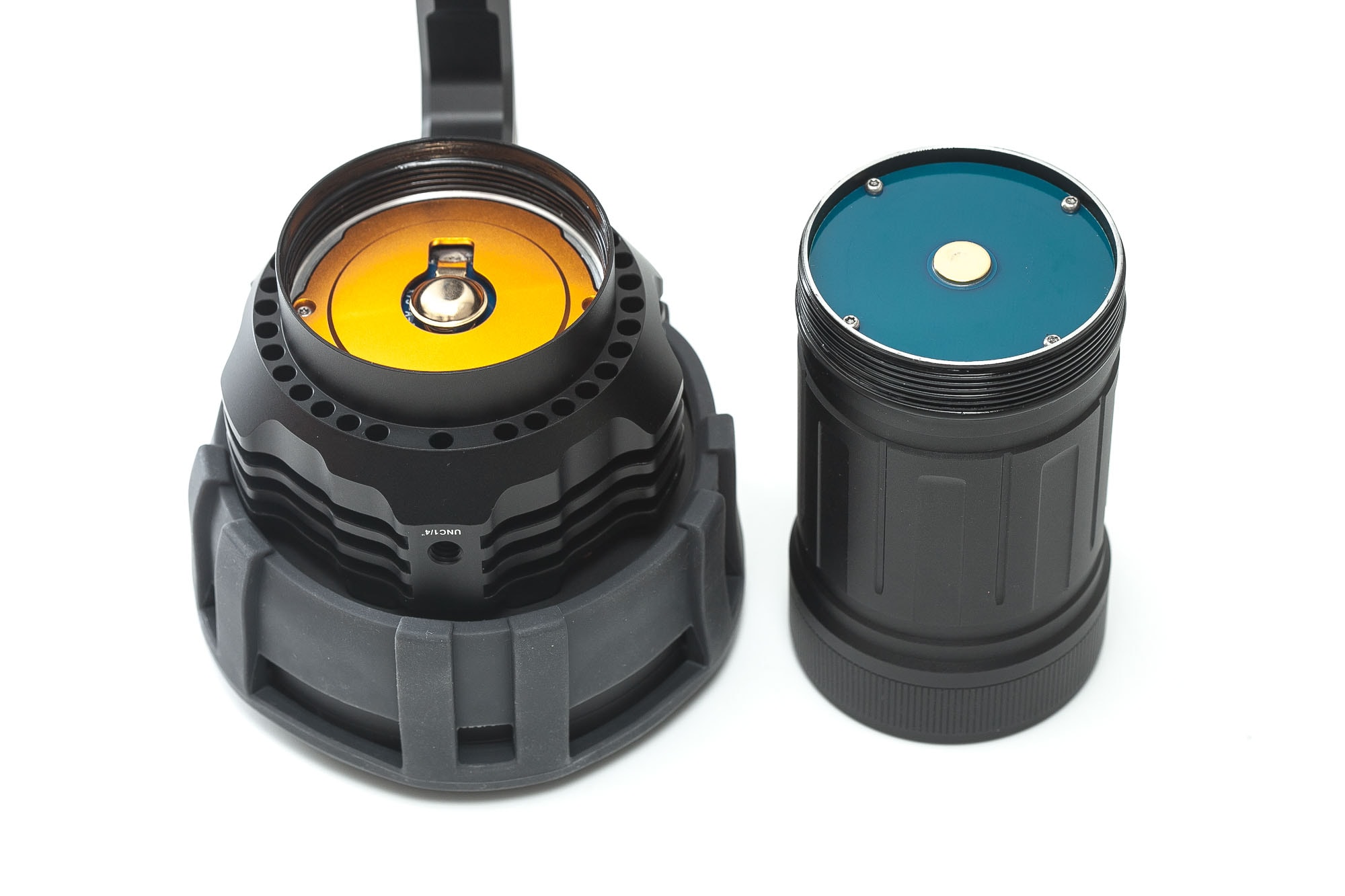
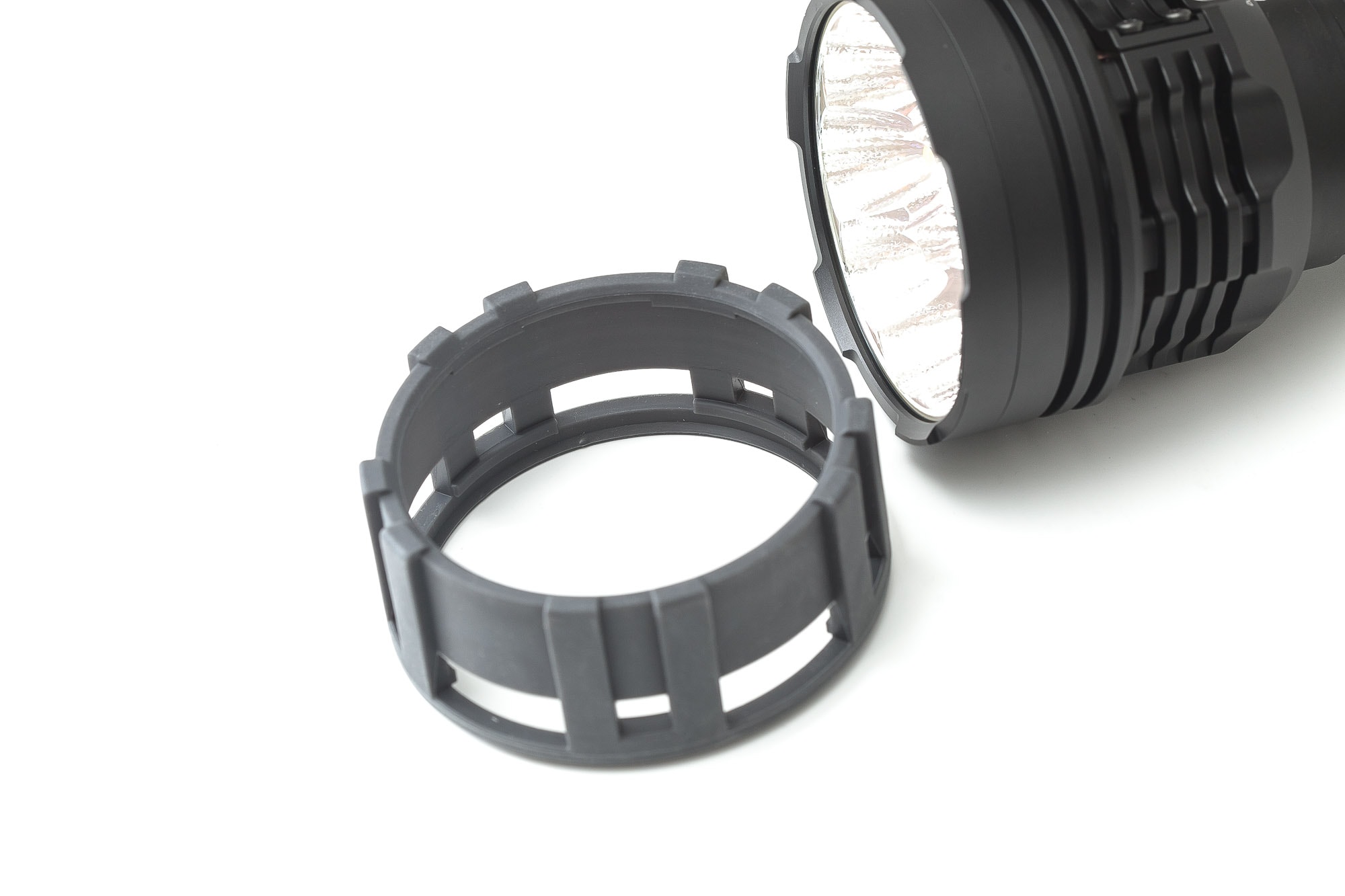
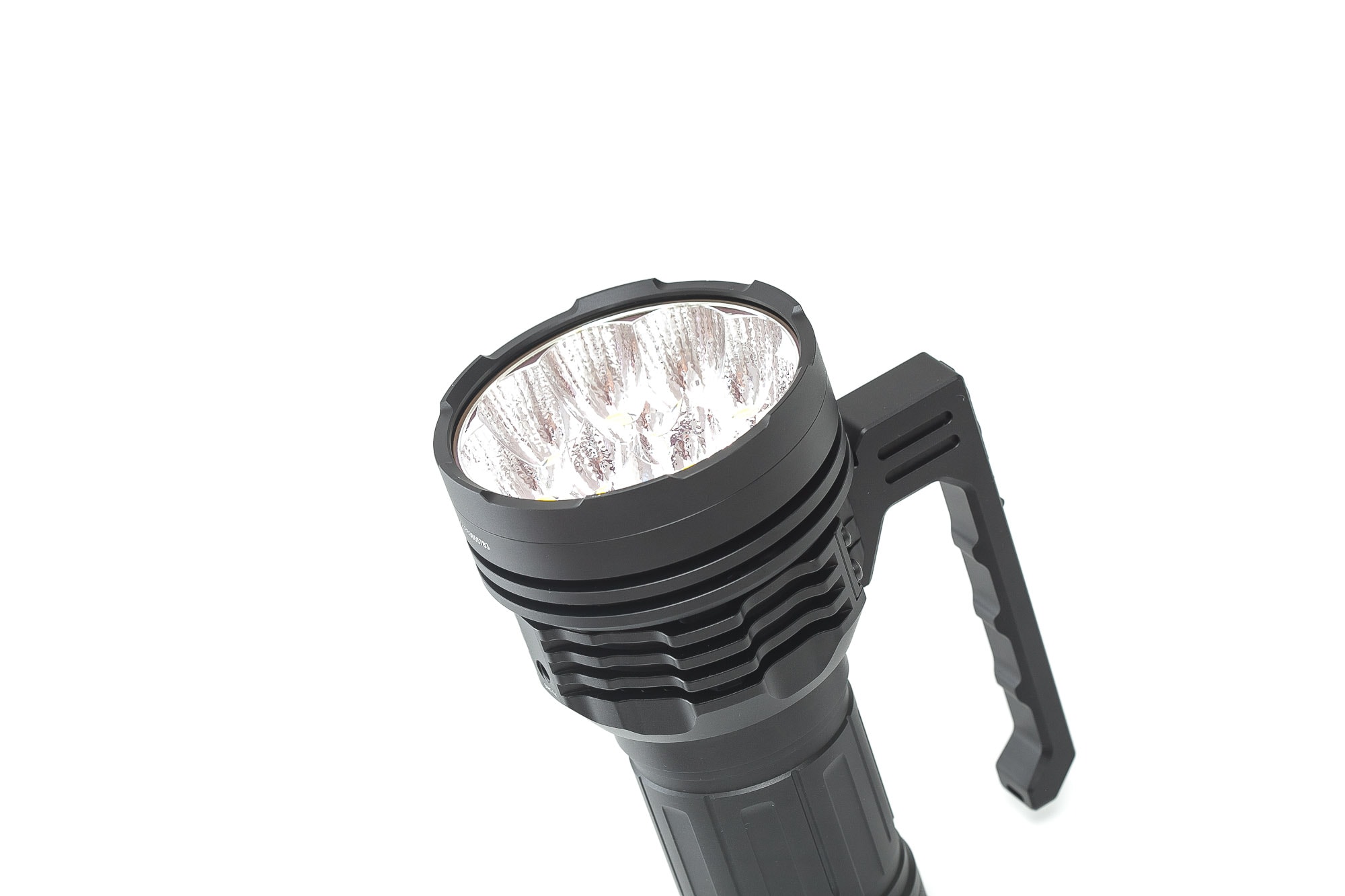
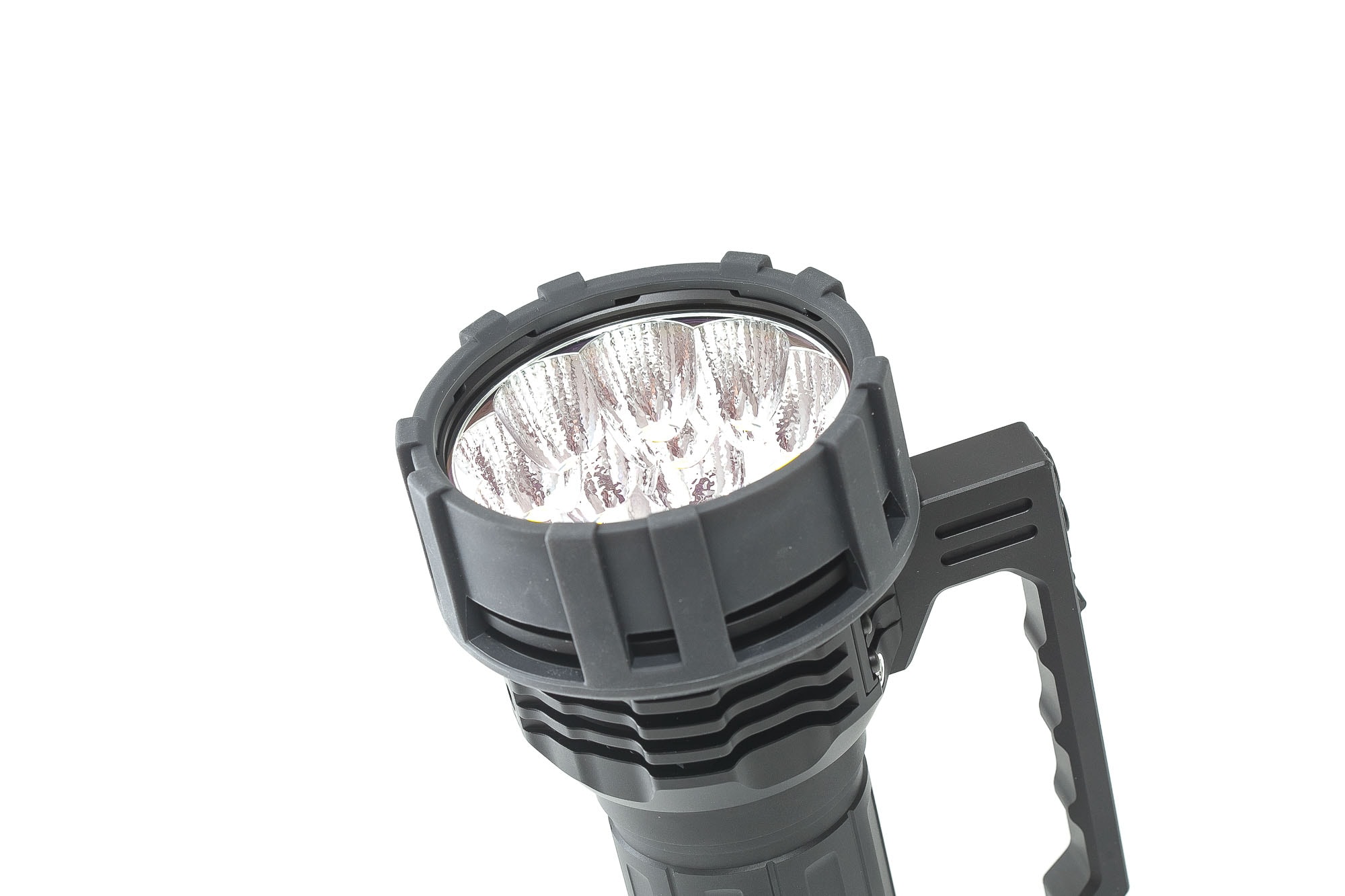
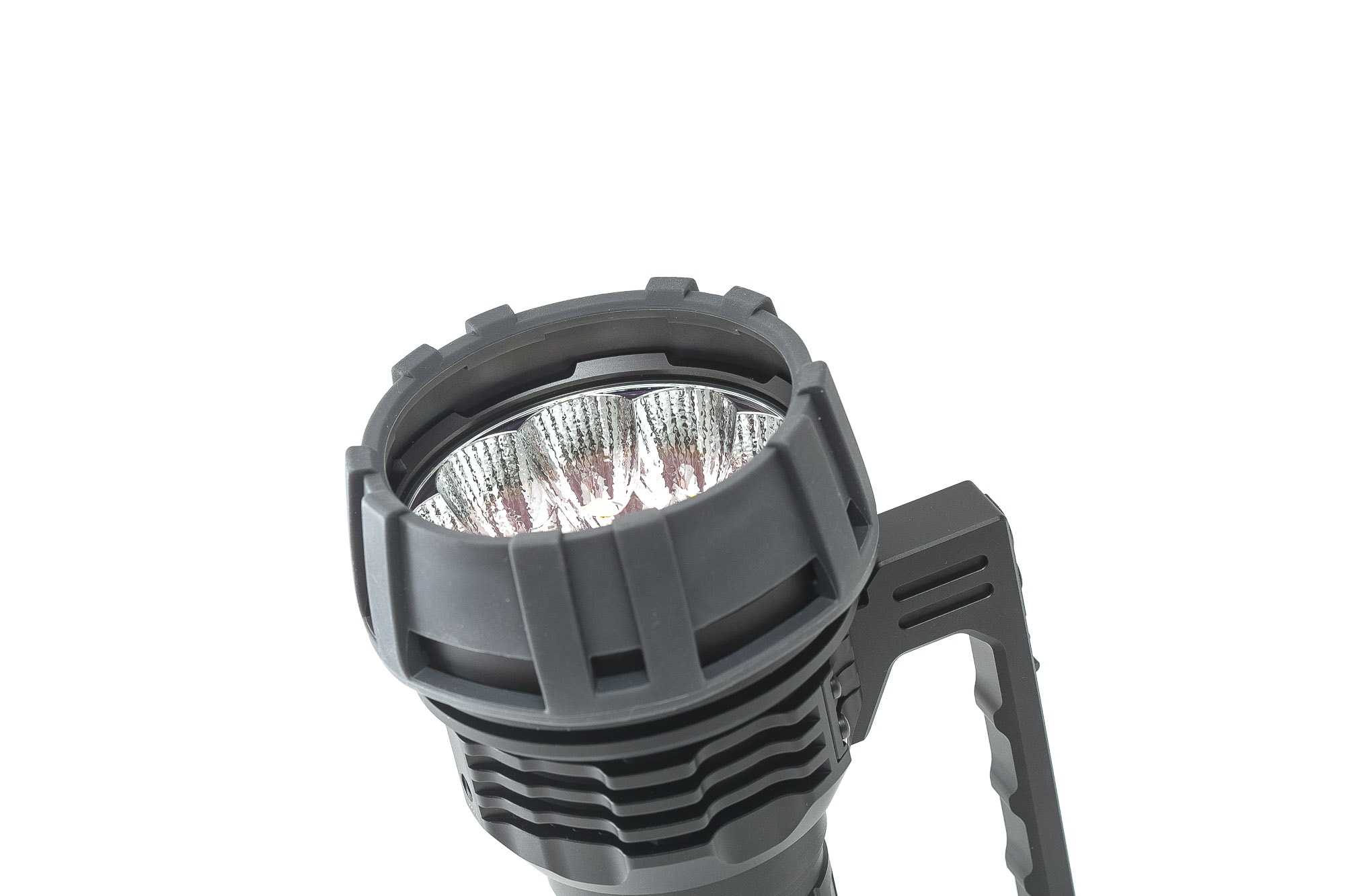
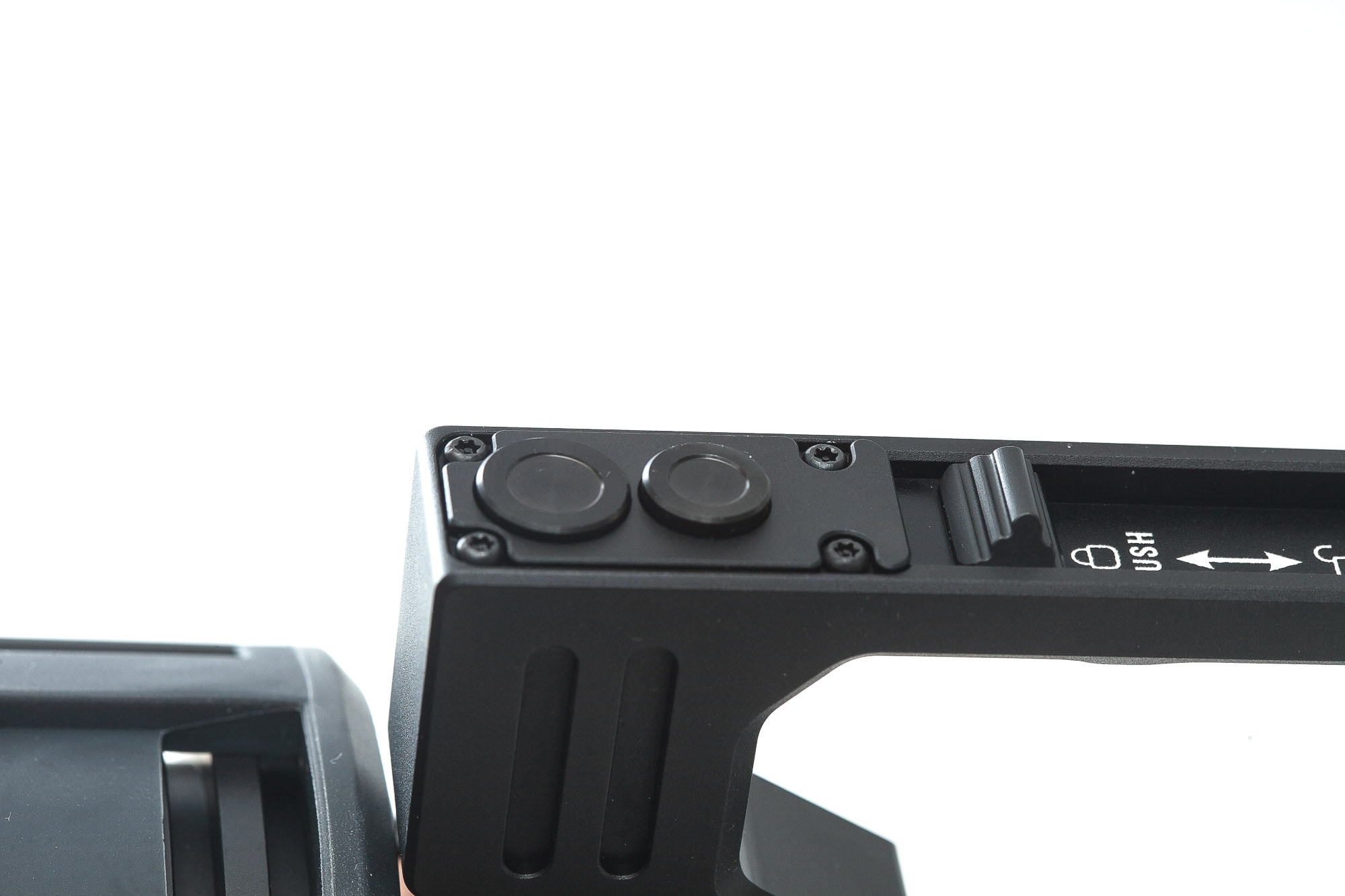
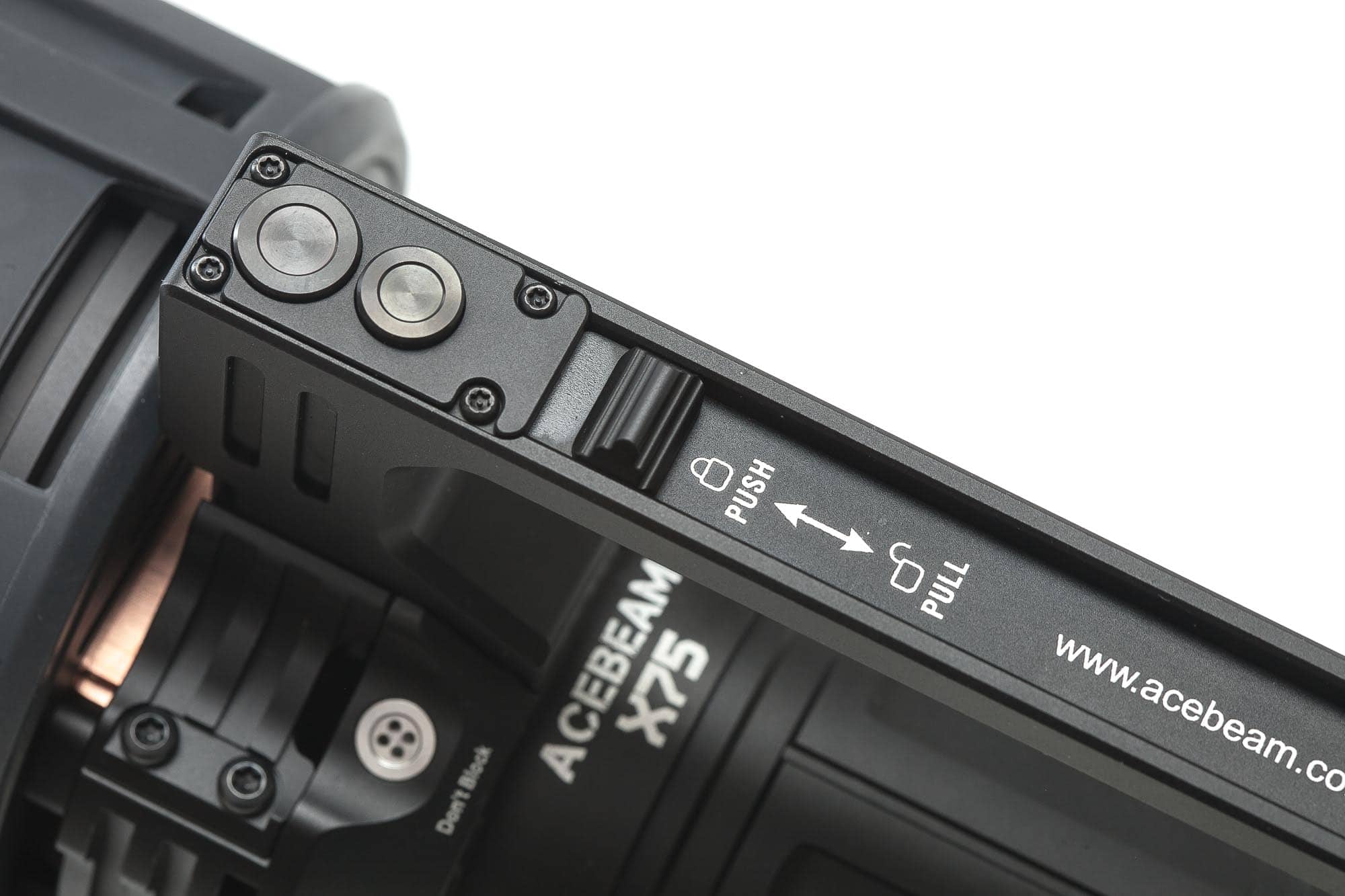
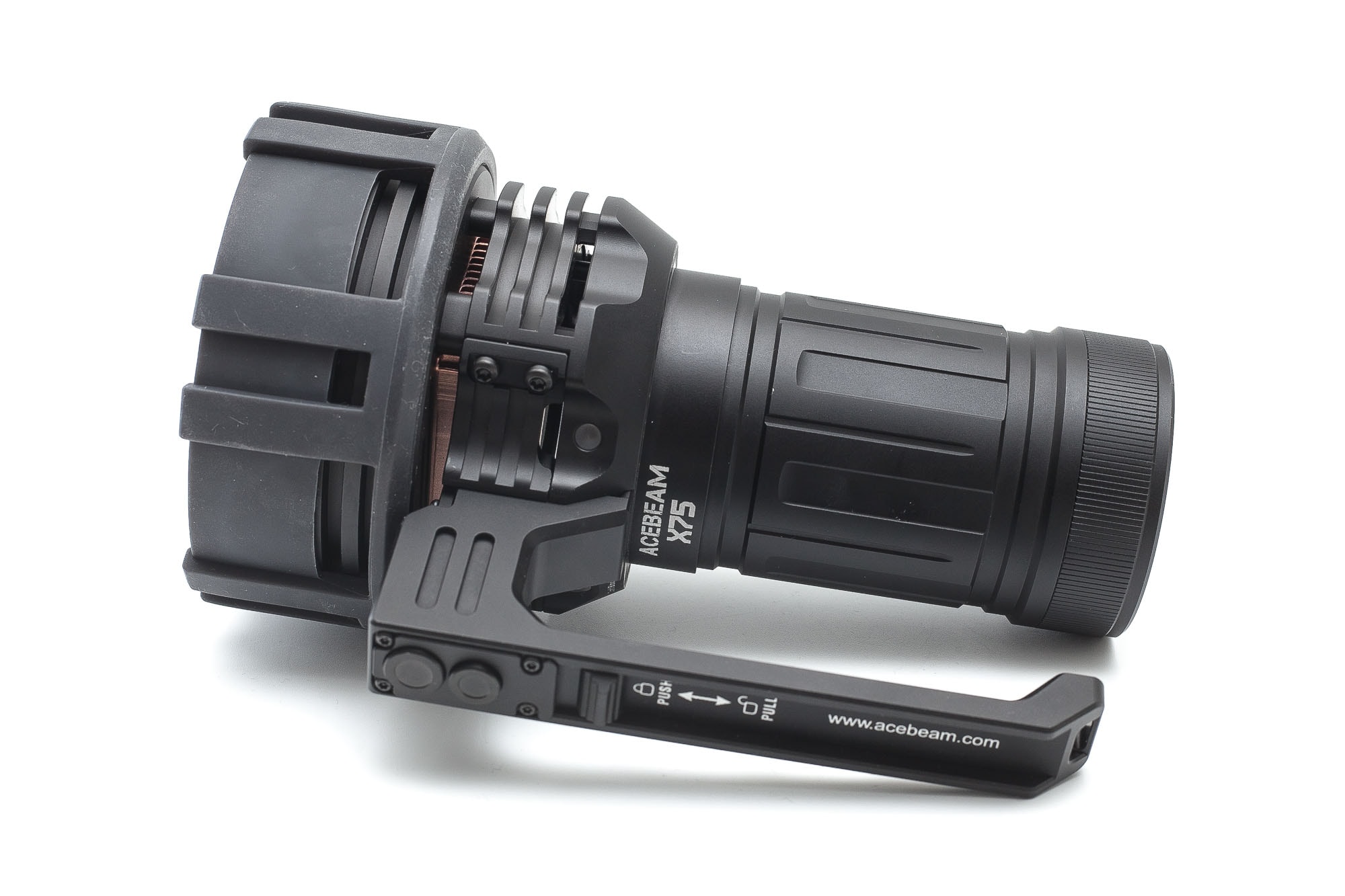
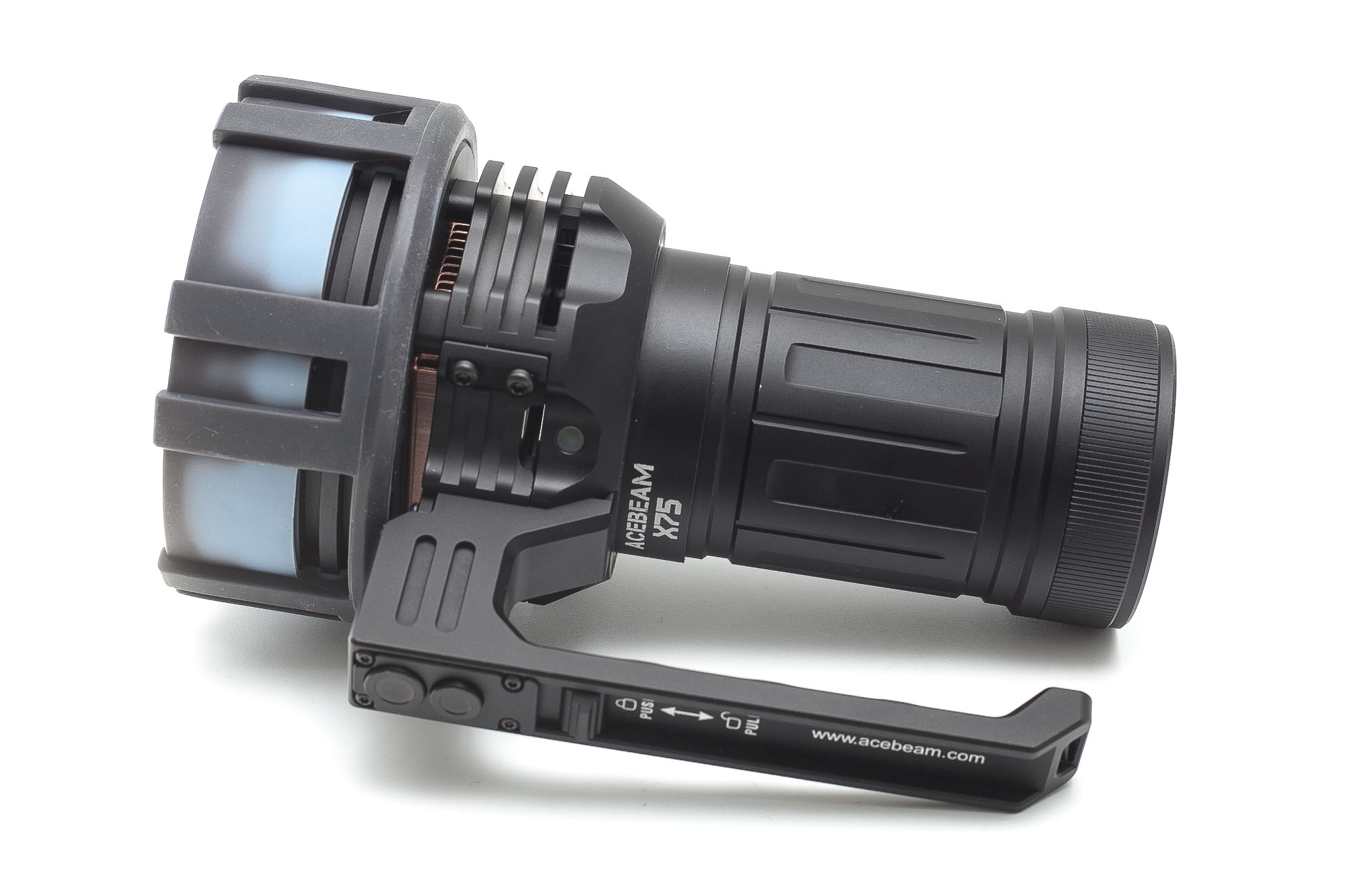
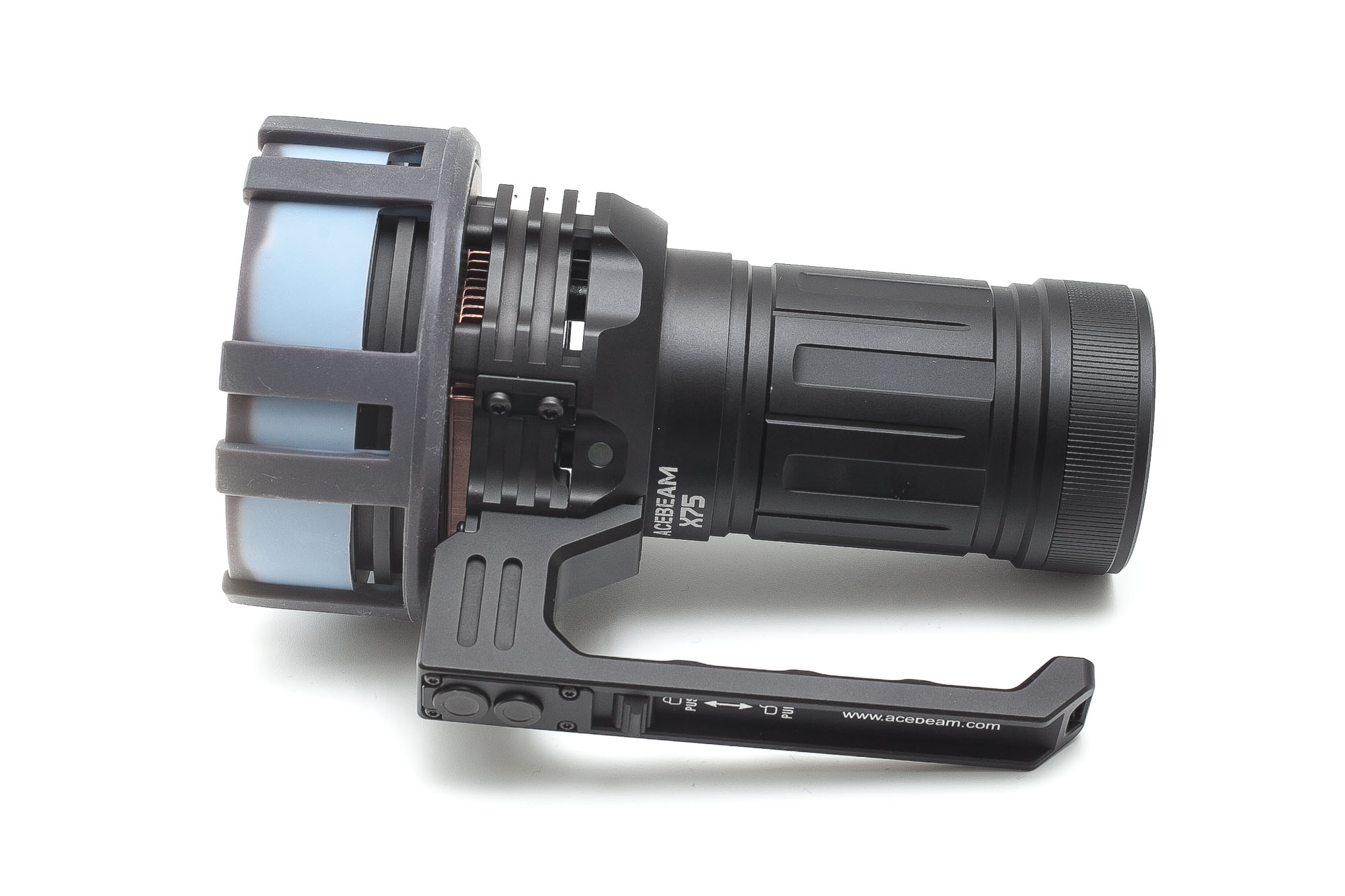
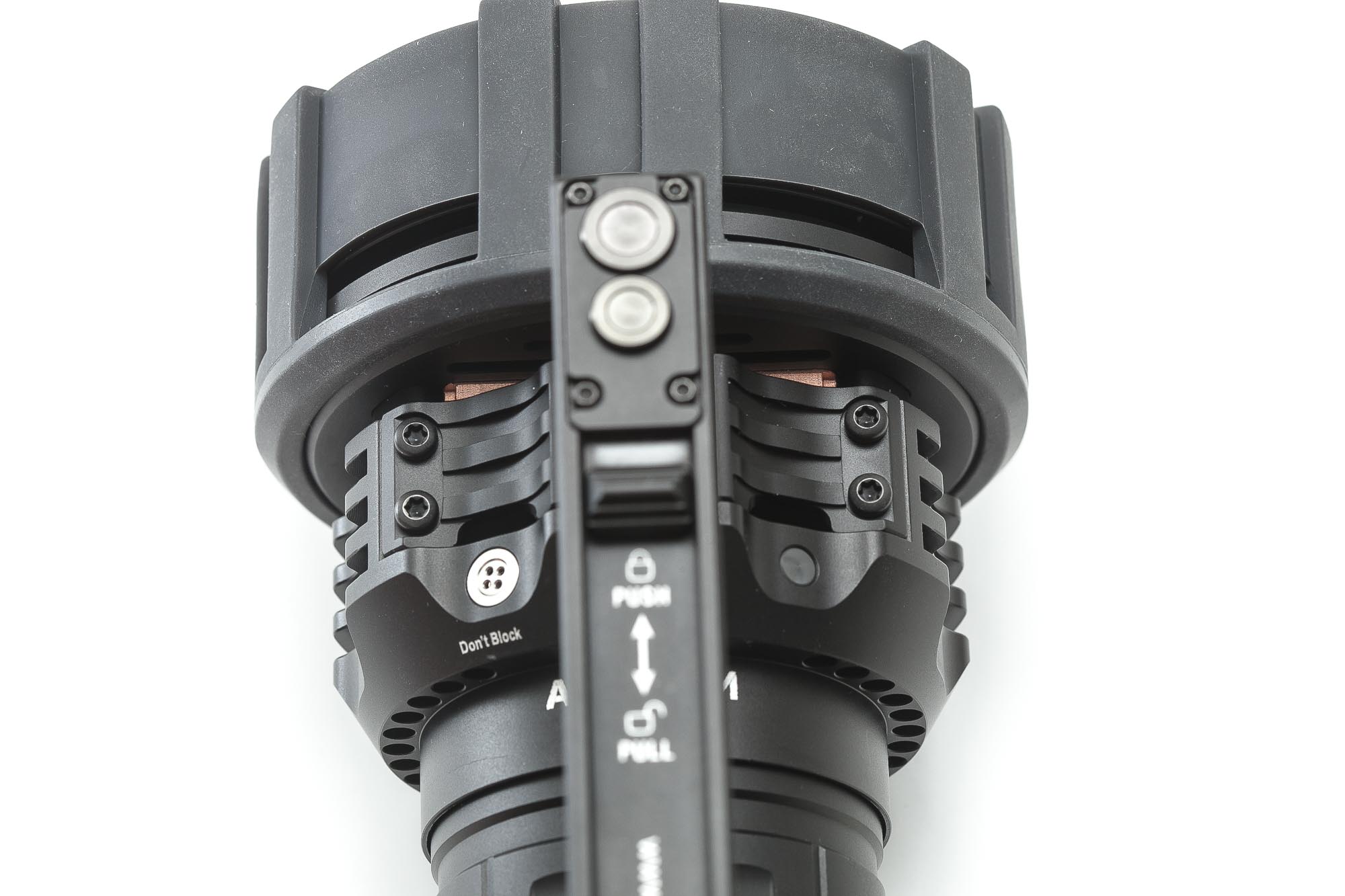
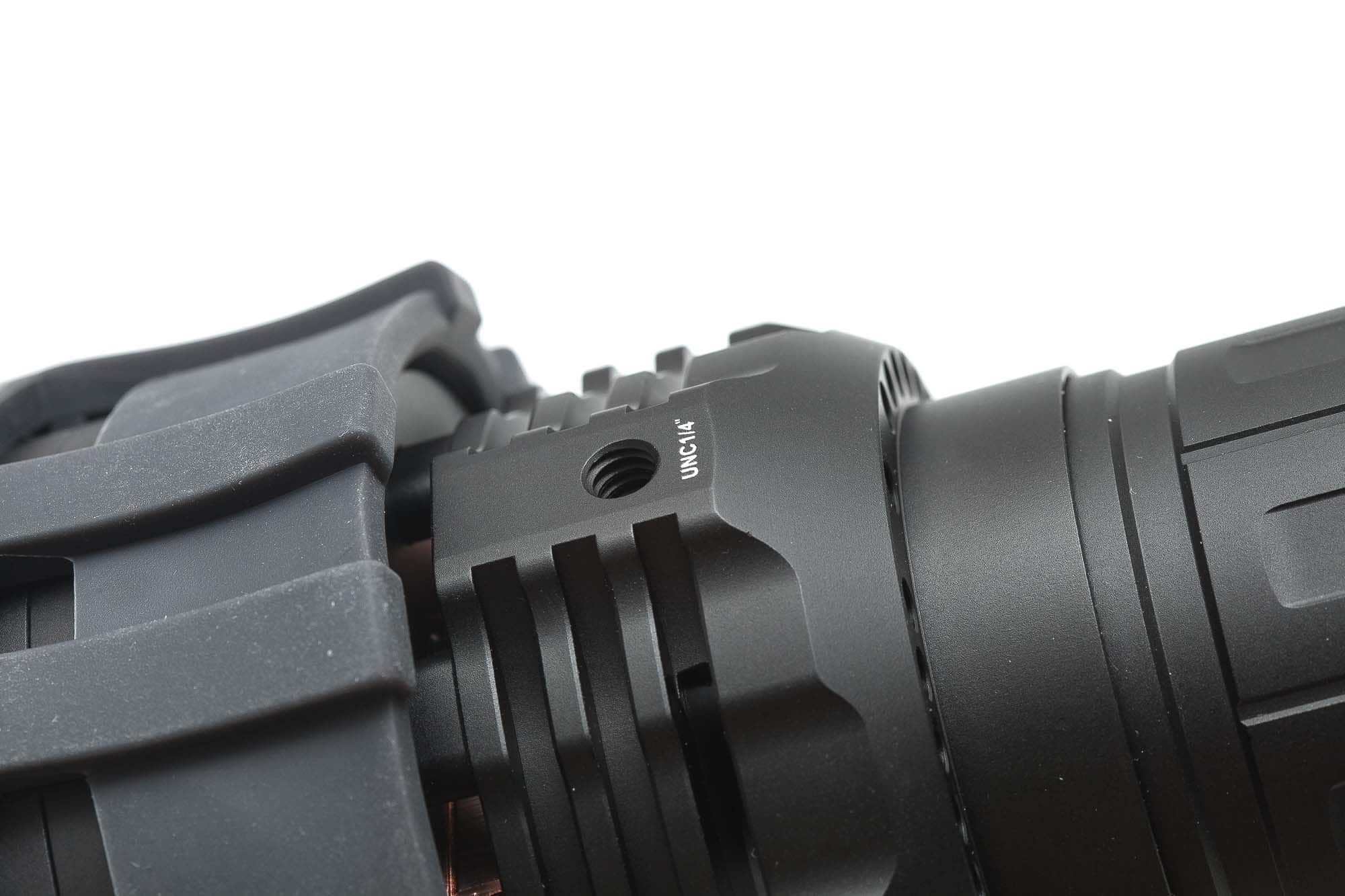
LED, Lens, Bezel, Beam, and Reflector
If you ever searched for powerful flashlights on Amazon, eBay, etc. You probably noticed that some of them use many LEDs to give you some visual indicator that it must be extremely bright. False!
Most of those LEDs can only produce a few hundred lumens and are not built to sustain their output. The LEDs used in the X75 are CREE XHP70.2 (and XHP70.3 are also available), which can produce thousands of lumens each. So, if you add 12 of them, you could realistically reach 80,000 lumens. Albeit very brief. And the one I am testing is the 5000K version (neutral white).
These 12 emitters sit in relatively shallow, orange-peel reflectors to give you an amazing wide beam (that we call flood). If these reflectors were deeper and smoother, the beam would have been more ‘throwy’ and a better balance between output and distance.
To protect the reflector and the emitters, Acebeam added a thick glass lens with a purplish AR coating.
The beam is very floody, and too bright to care about High CRI.. it just kills all the colors you pretend to see with your eyes. This is not an EDC flashlight, so high CRI is less or no issue.
To learn more about these emitters, I used an Opple Light Master 3 to measure the color temperature, and average CRI (also known as CRI Ra). And this is what I got for the lowest and highest modes (ultra low and Turbo. Measured at about a 3 meter-distance:
Ultra Low
- CCT: 4653K
- CRI (Ra): 67.1
Turbo
- CCT: 4716K
- CRI (Ra): 67.6
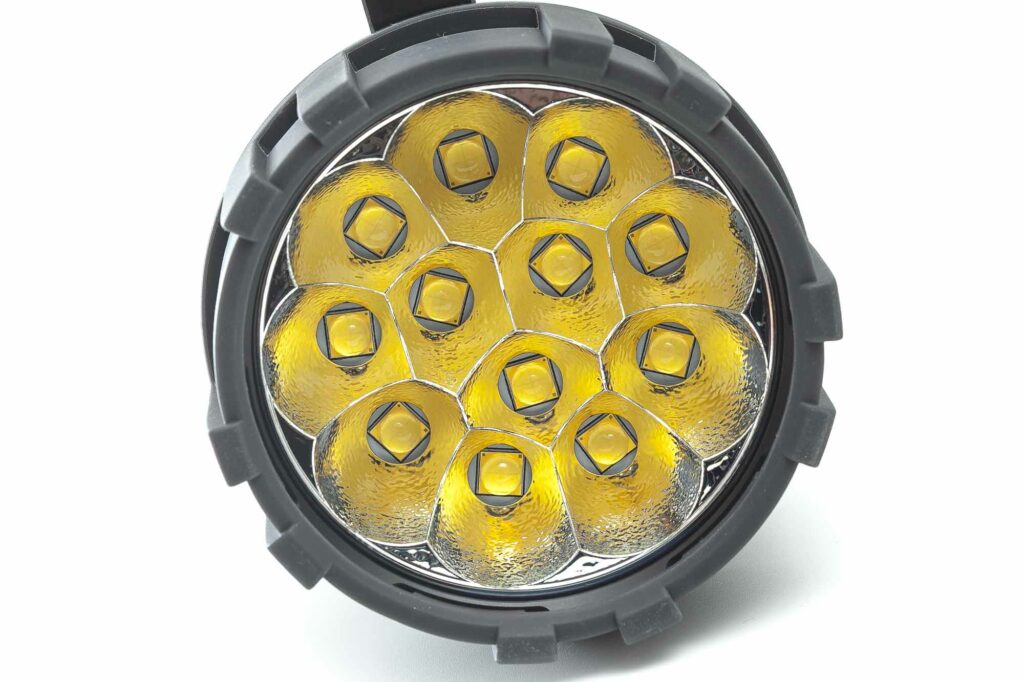
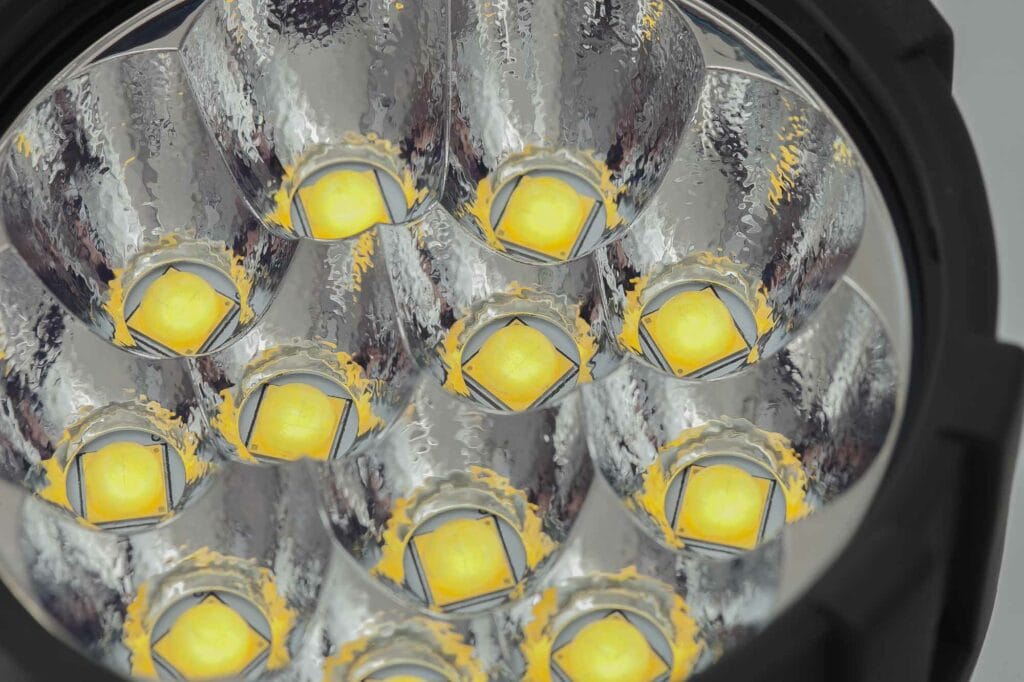
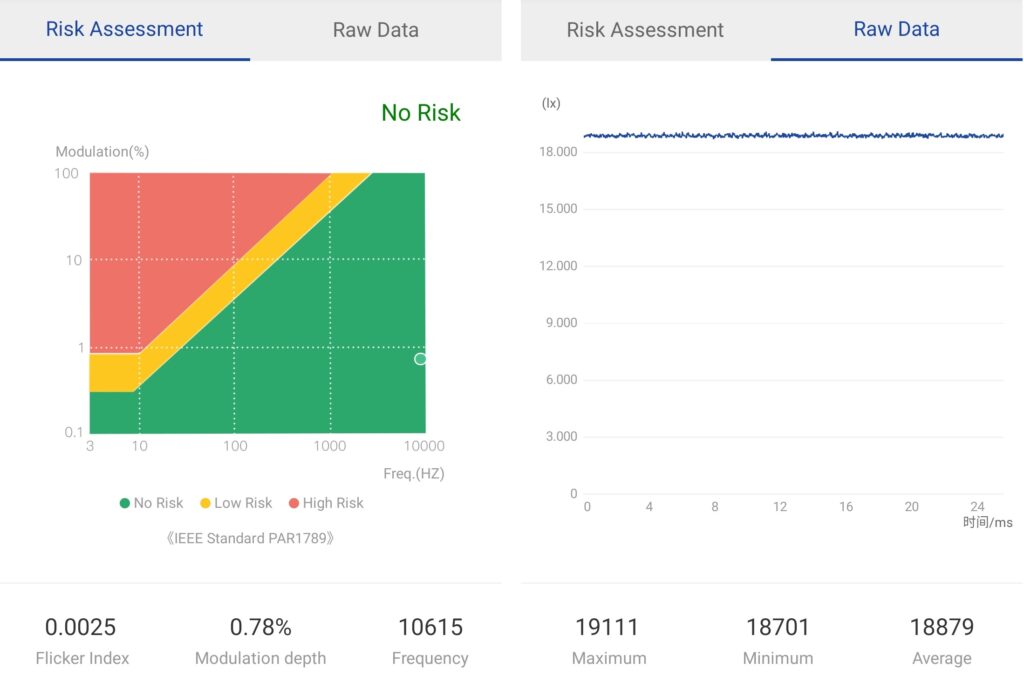
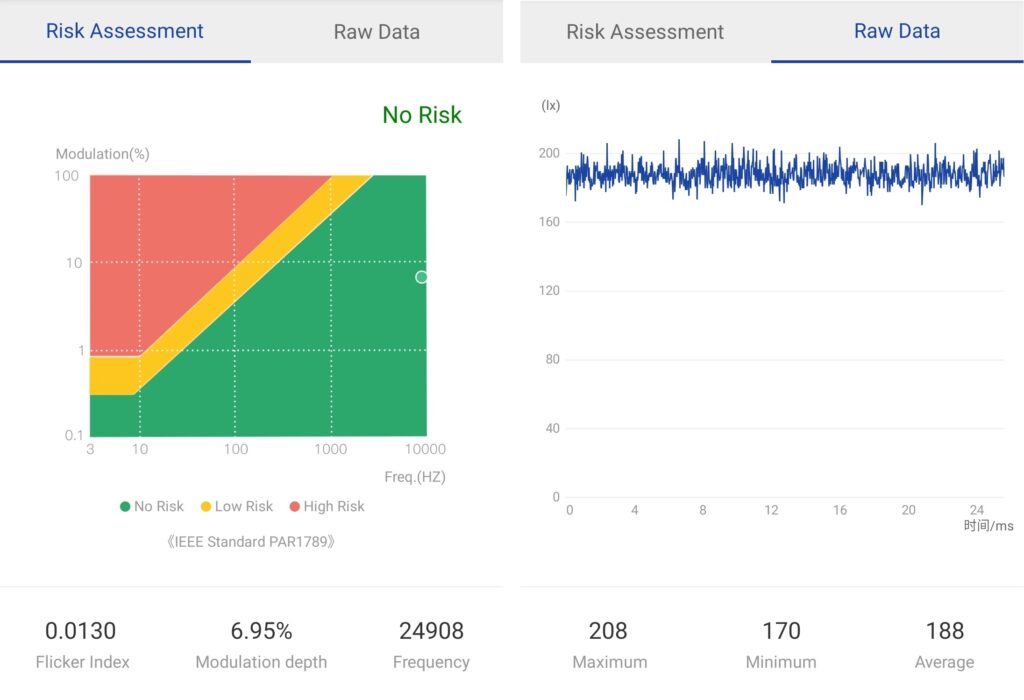
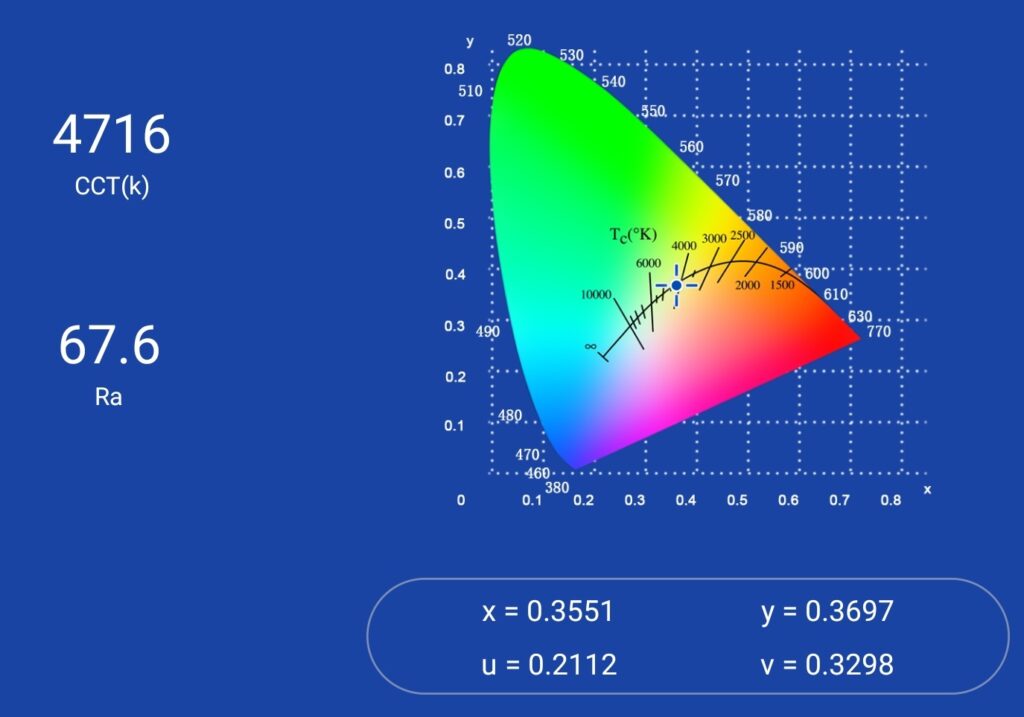
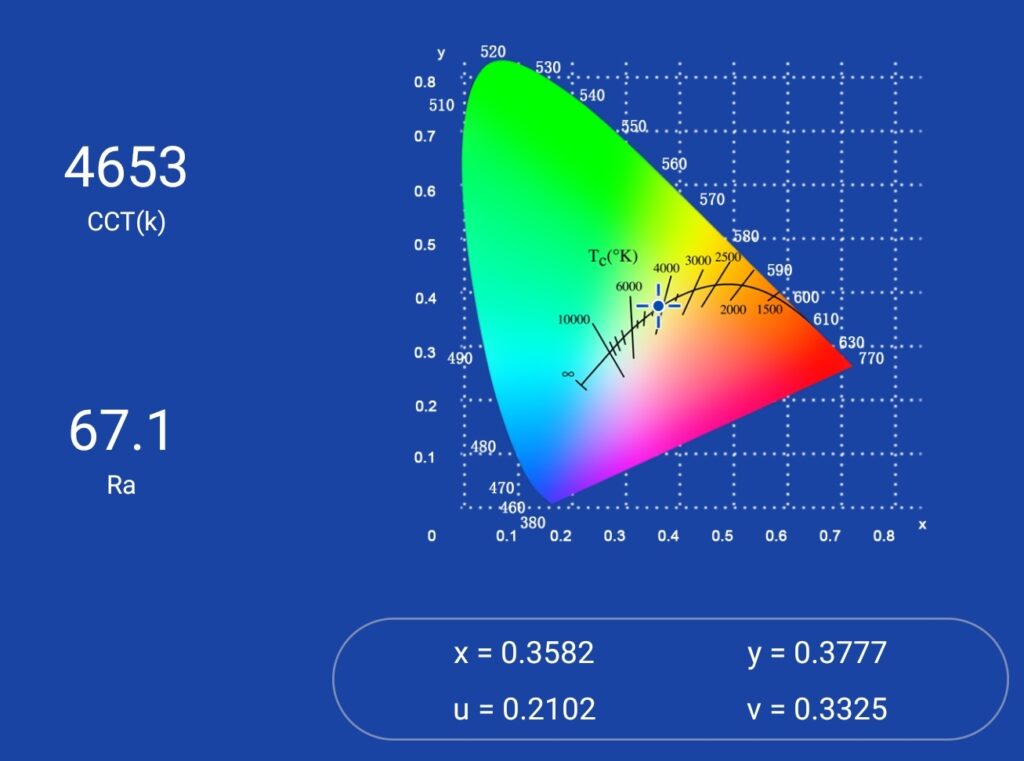
Dimensions and size comparison
Dimensions:
| Acebeam X75 dimensions | Millimeters | Inches |
|---|---|---|
| Length | 176mm | 6.92″ |
| Head diameter without sleeve | 92.15mm | 3.628″ |
| Body diameter | 57mm | 2.25″ |
| Tailcap diameter | 60 mm | 2.362″ |
Weight:
| Acebeam X75 weight | Weight in grams | Weight in Oz. |
|---|---|---|
| Total weight: | 1300 grams | 45.88 oz. |
Powerful Flashlights comparison
Size compared to other high power flashlights
Group 1: high power soup-can-sized flashlights: Imalent RS50, Imalent MR90, Imalent MS12 Mini, Acebeam X45 II, Acebeam X80-GT2, Manker MK38, Acebeam X75, Acebeam X50, Imalent MS08
Group 2: high power Acebeam flashlights: Acebeam X80-GT2, Acebeam X50, Acebeam X45 II, Acebeam X75, Acebeam X70
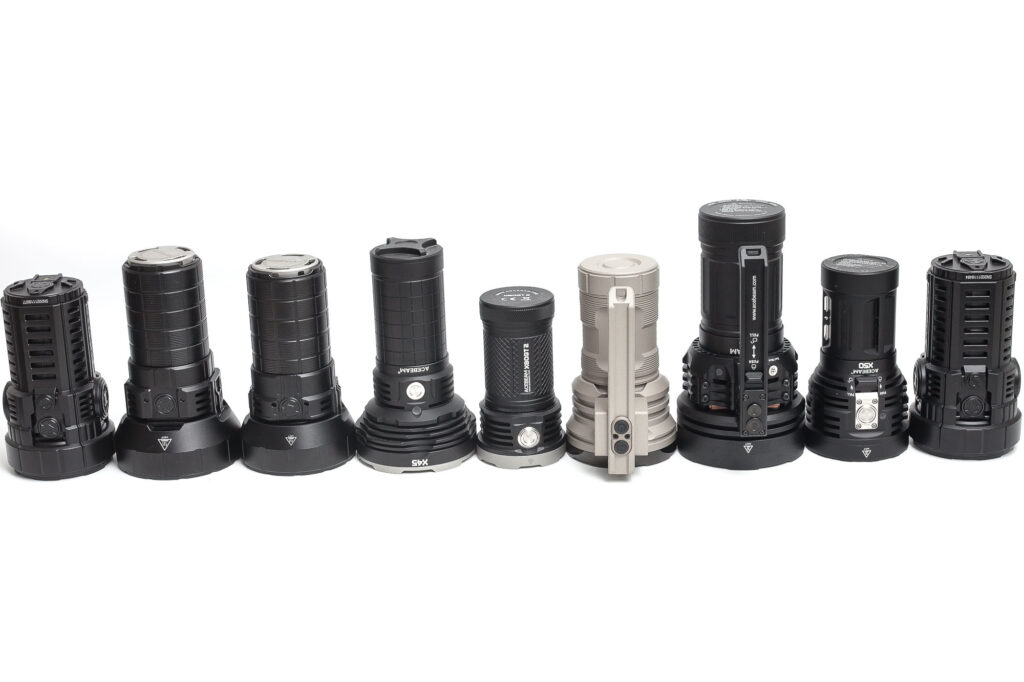
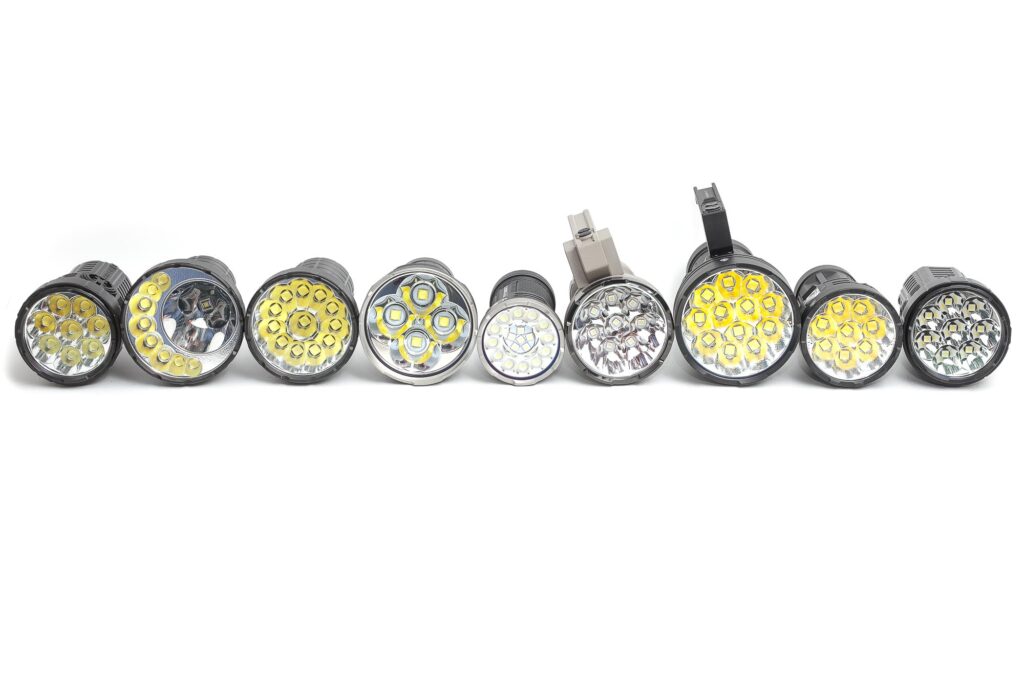
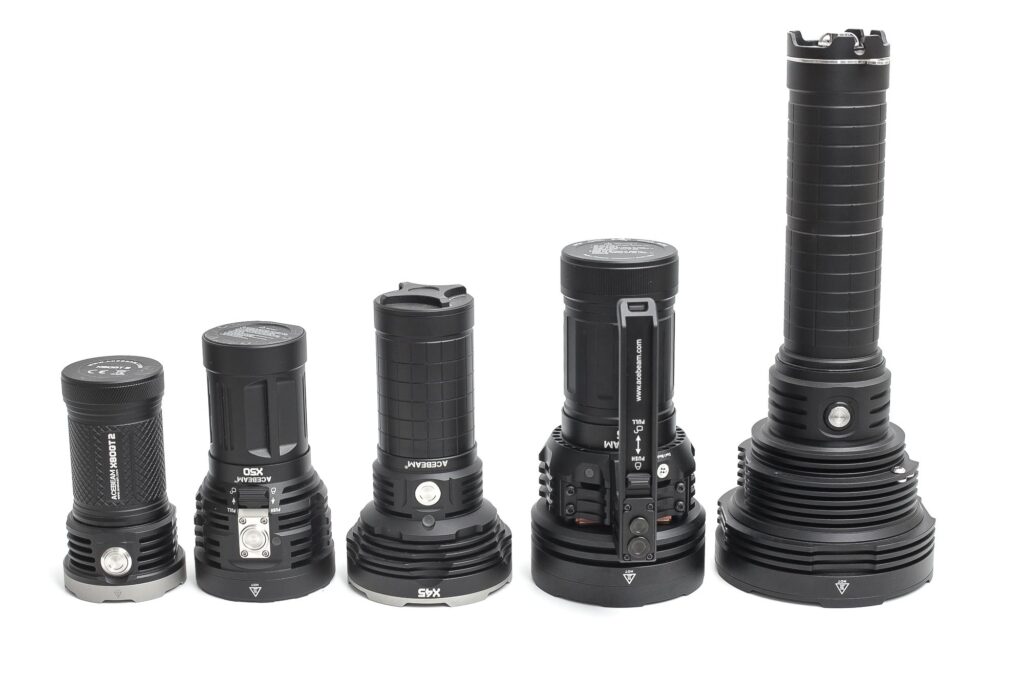
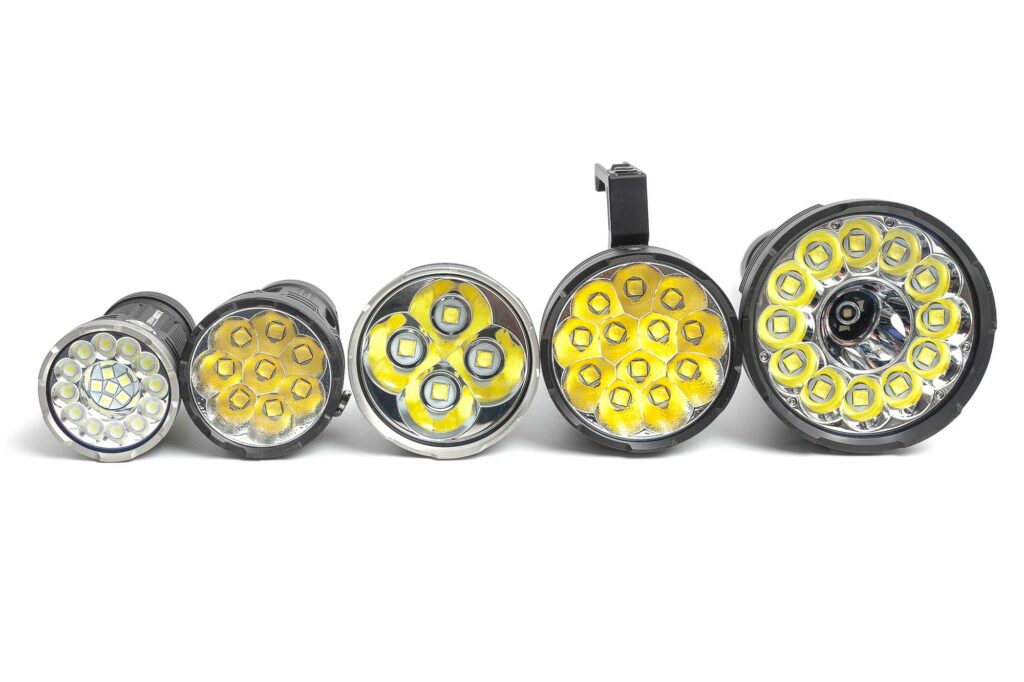
Driver & User Interface:
Acebeam specifies the driver as a 98% high-efficient constant current driver. It powers the light with 2 different mode groups, namely Power mode and Eco mode. The only difference between them is the ECO mode has shorter sustained highest outputs, but the rest is just the same.
The switches need to be pressed well to use them. They are a bit insensitive so to say. Especially if you want to switch between Power and Eco mode. You really have to firmly press the switch 10 times to switch between these mode groups. And you have to press them slowly. You can’t enter Turbo mode with 2 fast clicks from Off, but it works with 2 slow clicks.
Available modes:
- Ultra-low, Low, Mid1, Mid2, High, Turbo
- Strobe mode
Available special modes
- Strobe
From OFF
- Auxiliary switch: Single-click: Nothing
- Auxiliary switch: 3 seconds press and hold: activate/deactivate fan (wind mode)
- Aulixlary switch: 10 clicks: switch between Power mode group and Eco mode group.
- Main switch: Single click: Last used mode
- Main switch: Double click: This is supposed to be Turbo mode, but mine doesn’t do that Edit: it does, but they are 2 slow clicks, not fast clicks
- Main switch: Triple click: strobe
- Main switch: Press and hold: Ultra low mode
From ON:
- Auxiliary switch: Press and hold: Momentary Turbo (but it will return to last used Main mode, excluding Ultra Low)
- Main switch: Single click: turn off
- Main switch: Double click: Turbo
- Main switch: Triple click: Strobe
- Main switch: Press and hold: change modes from Low to High (Ultra low and Turbo are not part of the main modes
Shortcuts:
- To Turbo: Double click from On
- To Ultra Low: Long press from Off
- To Strobe: triple click from On or Off
Mode memory:
- Yes, a single click returns to the memorized mode. This excludes UltraLow and Turbo
Blinky modes menu:
- Yes, but only Strobe
Low battery warning:
- Indicator LED blinks
Lock-out mode:
- There is a lockout switch
PWM:
- Not visible by eye.. But according to the Opple Light Master 3, there is some, at a very high range.
Firmware / UI Conclusion:
Double click to Turbo doesn’t work on mine. And the thing I don’t really understand is the use of ECO mode group. The outputs are the same, except the output drops earlier. If I were Acebeam, I would think deeply about the Eco mode group.. and possibly change the outputs, so they are different from the Power mode group. Get a lower Low, and a lower Turbo. Something like a Muggle mode group.
Batteries & Charging
I know that many people in the flashlight community dislike battery packs. And for a good reason. But at the same time, as a manufacturer, you want to have maximum safety and performance control. And because of that, the choice for a battery pack is totally understandable and acceptable in my opinion. If you’re a small company that nobody knows outside the flashaholic world, you could probably get away with this. But as a manufacturer who wants to be taken seriously around the globe, you kind of have to do this.
Anyways, Acebeam decided to go with 65W USB-C PD charging and included a USB charger capable of delivering this. This means that it charges at about 20Volts and 3 Amps for most of the time. And according to Acebeam, it only takes 1.5 hours to charge the 4*21700 batteries in the battery pack.
If you think that’s still too slow, you can get the optional 100W USB charger to finish charging within 1 hour.
I tested the charging several times, and each time it could finish within 1.5 hours easily. And if you use a USB meter like I do, you’ll notice that a fully discharged battery starts charging at a very low current, of 0.1-0.4amps, before it starts ramping that up to 3Amps.
Towards the end of the charge, the current is reduced again to roughly 0.4 Amps, before it finishes charging. If you think about it, you could possibly charge the battery pack within 1 hour, if you stop a little early. That way, you might get up to 90-95% of the charge, but that’s probably enough in most cases, and a little less stress on the batteries.
To charge the X75, you have to unscrew the tailcap and find the USB-C port within the threads rather than at the bottom of the battery pack. I don’t know the reason for this, and I saw some people complaining about it. But this isn’t very important in my opinion.
The battery pack also works as a power bank. So you can charge other devices while you’re on the road. That’s a pretty nice feature. I tested it by charging my phone, and got about 7 watts of charging power. It’s likely able to discharge at a higher current.
One thing that I encountered with its sibling (X50) is that the included charger wouldn’t charge when the battery was too deeply discharged. Acebeam covered that with the X75 and built a ‘reset’ switch in case you have trouble charging. Fortunately, I had no trouble charging the battery pack at any time.
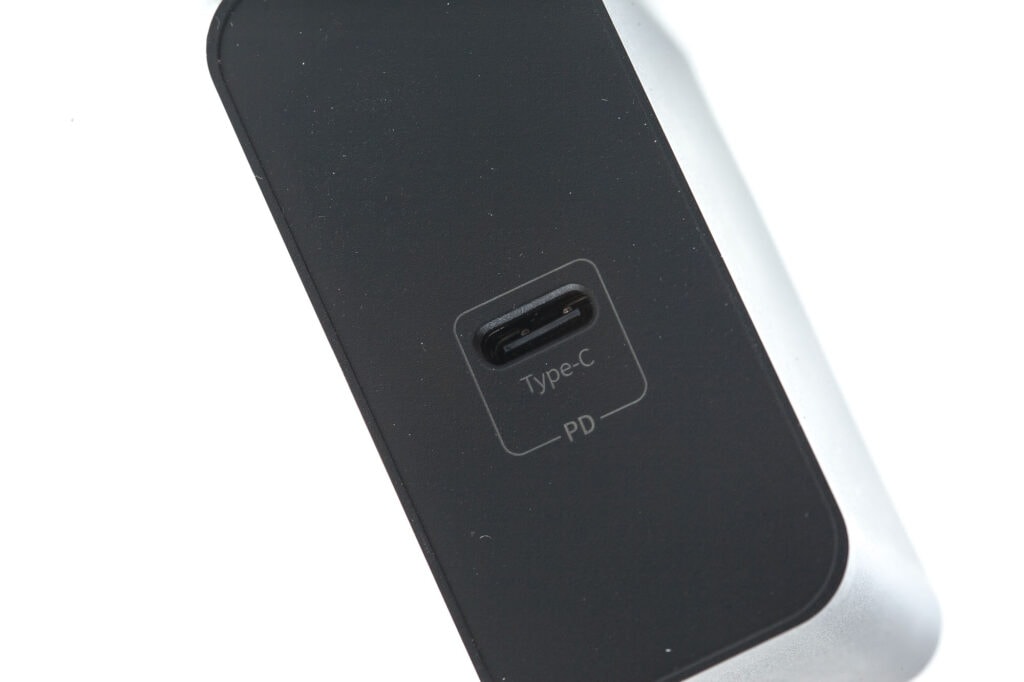
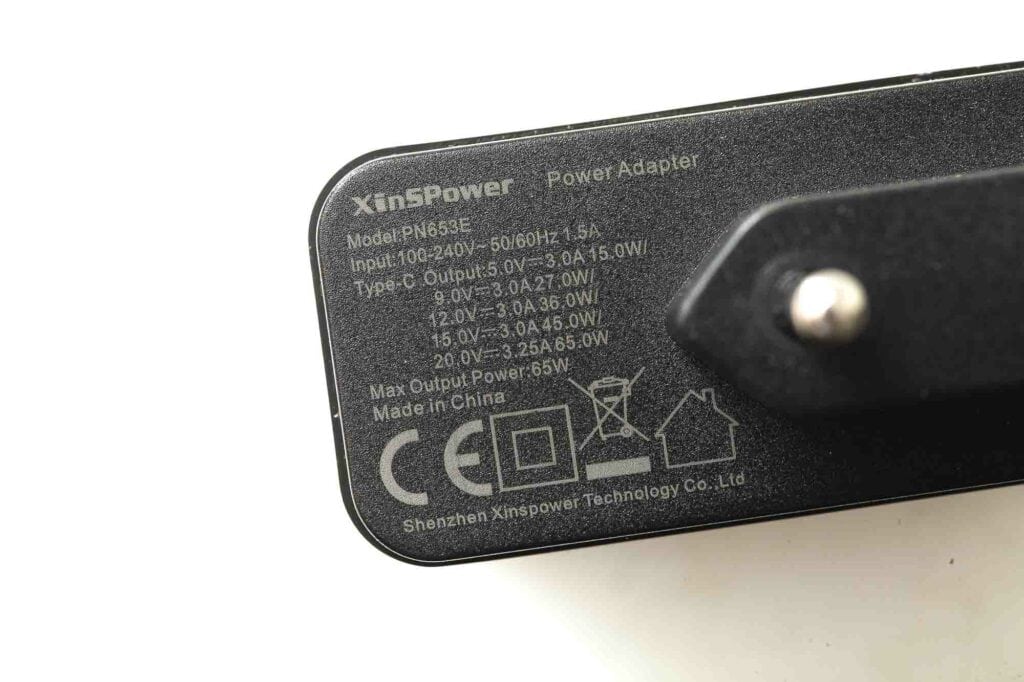
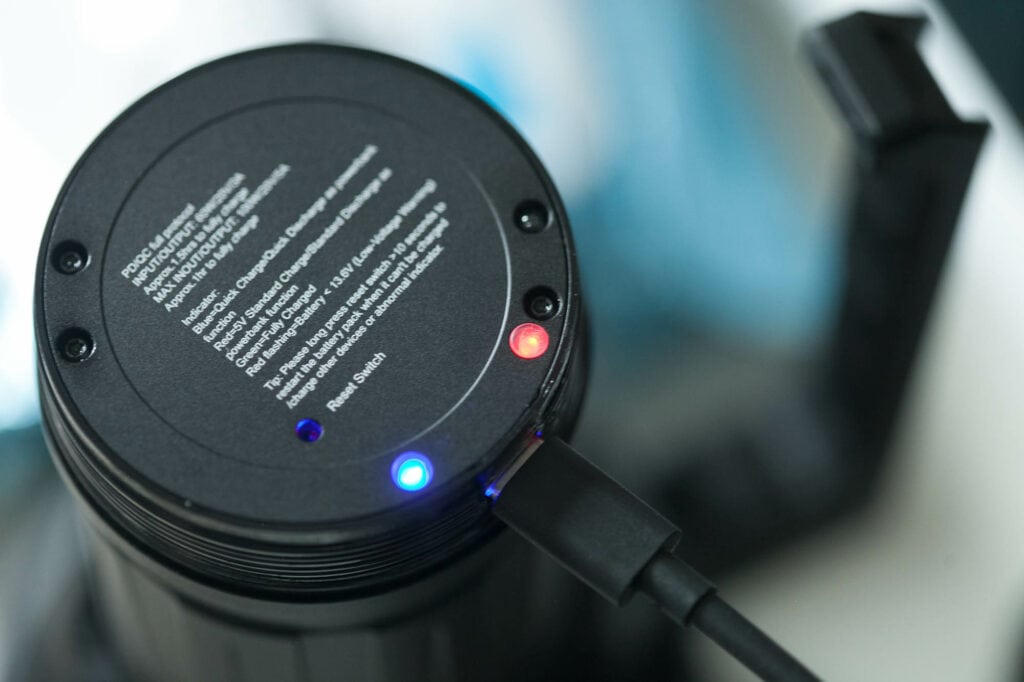
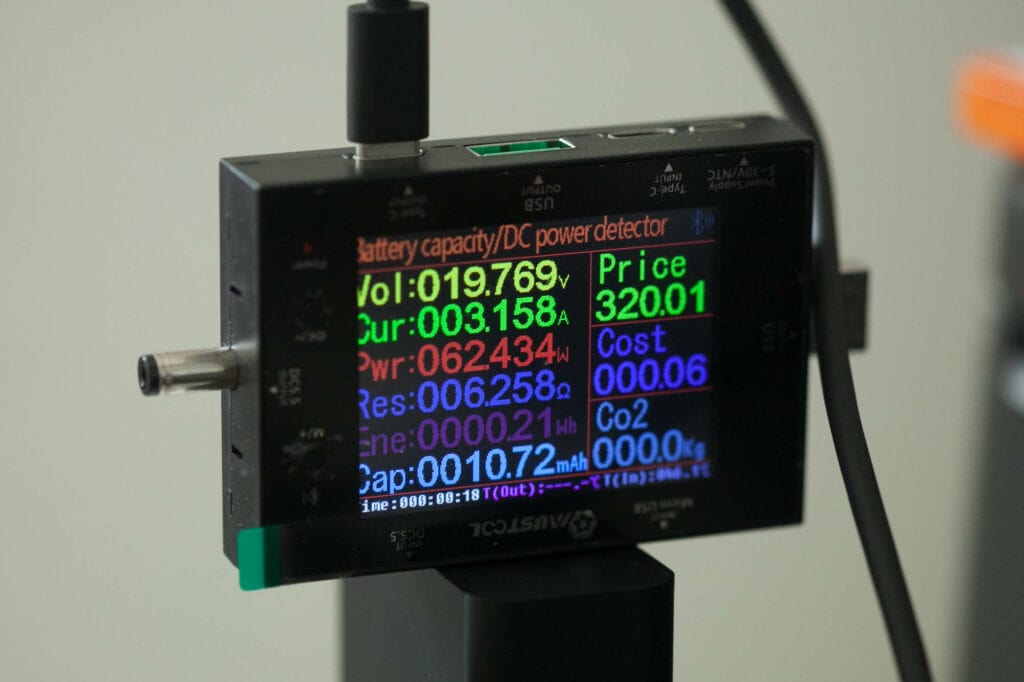
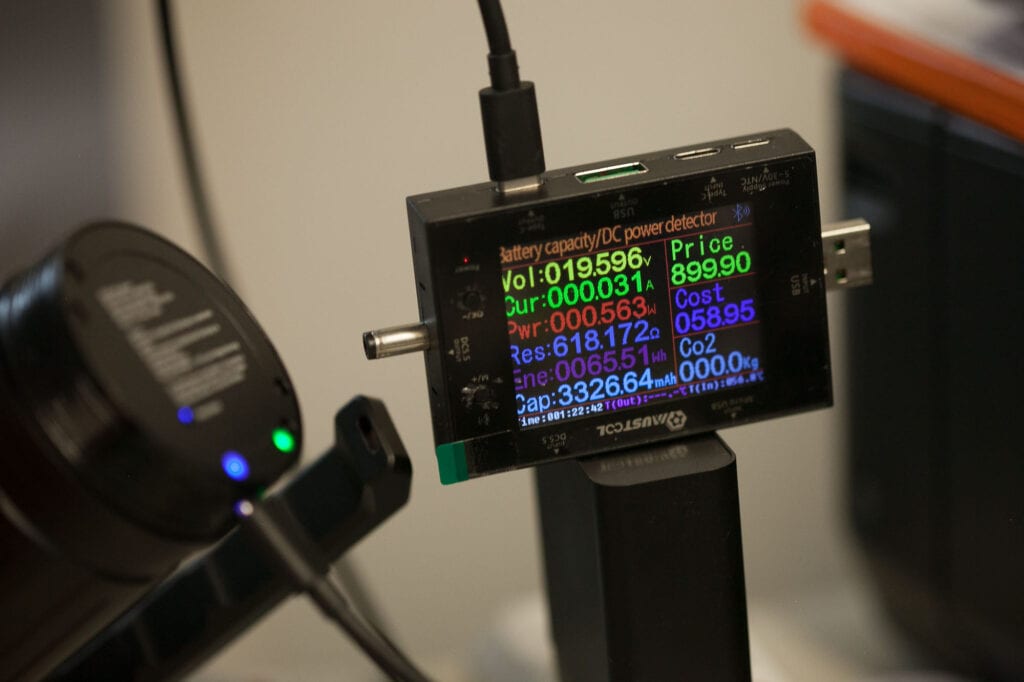
Performance test
Lumen measurements:
All output numbers are relative to my homemade Integrating Sphere. It is set up with an Extech SDL400 Lux Meter for measurements. And I used the following ND filters: Kenko PRO1D ND-16 filter, Hoya PRO ND100, and a Gobe ND32. The base measurement is done with a Convoy S2+ that has been tested at 249 lumens. This is the first review where I use the base calculation at 249 lumens instead of the 255 lumens it was originally bought as.
I calculated it in many different ways.
For example, I did all the measurements with the ND16 based upon the Convoy S2+ of 252 lumens, up to High mode (Turbo would do max out the meter). Then, insert the ND100 filter and use the Mid1 measurement as my base calculation for the ND100 measurement.
I also tested the Convoy S2+ with the ND100 filter, but the numbers were just too low to trust as my main calibration number.
Then I bought the ND32 filter, which can do everything from tens of lumens to over 100,000 lumens. So I tried it multiple ways, and there were some differences, but they were only in the lower percentage. 1-3%
All of my readings were taken from a fully charged battery pack.
| Mode | Specified | Turn on | 30 seconds | 10 minutes |
|---|---|---|---|---|
| Ultra Low | 900 | 641 lm | 641 lm | 635 lm |
| Low | 2,000 | 1,839 lm | 1,839 lm | 1,815 lm |
| Mid1 | 5,000 | 4,804 lm | 4,804 lm | 4,666 lm |
| Mid2 | 11,000 | 10,245 lm | 10,221 lm | 9,713 lm |
| High | 23,000 | 21,550 lm | 21,550 lm | 17,303 lm |
| Turbo | 80,000 lm | 64,295 lm | 73,716 lm | 21,061 lm |
| *Turbo (highest point) | – | 83,607 lm* | – | – |
I tested all the modes several times. During the runtime tests, the integrating sphere became so hot that the glue (from a hot glue gun) melted that it kept the ND filter on the sensor. This happened 2 times and damaged my ND filter beyond repair.
During this, the baffle inside the sphere also moved, and I only realized that afterward. I put it back in the correct position and retested it. I also sent my calibration light for recalibrating, and it came back with a slightly lower output than it was originally tested. I then redid all the calculations based on the new numbers and the new calibration factor.
*You can see that Turbo doesn’t start at the highest output but starts lower, reaching over 80,000 lumens after a few seconds and then reducing again to 73,000 lumens in 30 seconds.
Acebeam X75 Battery life and runtime graphs
The runtime test was done with the 50cm integrating sphere, including the Genbo ND filter and Extech SDL400 data logging Lux Meter. For Turbo, I used a Kenko ND100 filter, because the ND16 filter wasn’t enough to max out my luxmeter.
I tested all modes with the fan activated (Wind mode), however, the fan would only turn on when the head reaches a certain temperature… so it didn’t stay on the whole runtime, which is great. But I also tested Turbo with and without the fan. BTW. All Turbo modes were tested with a large standing fan because I was afraid it would melt my integrating sphere or damage something else!!!
I tested Power Mode with Wind.
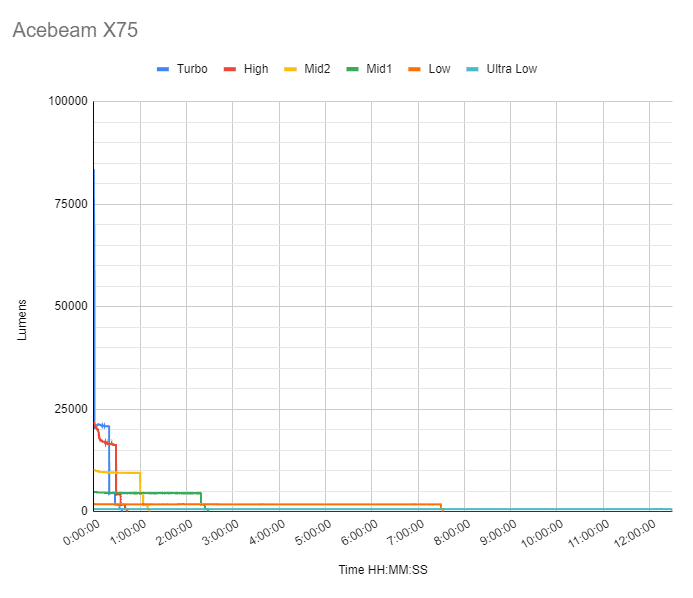
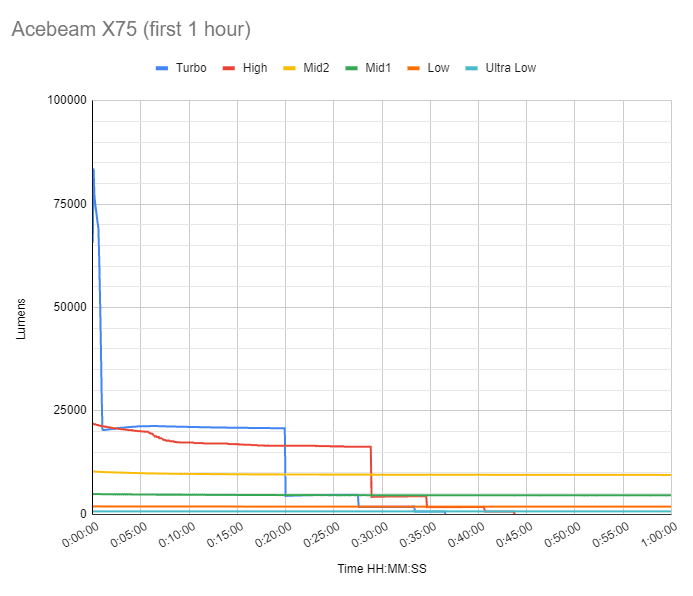

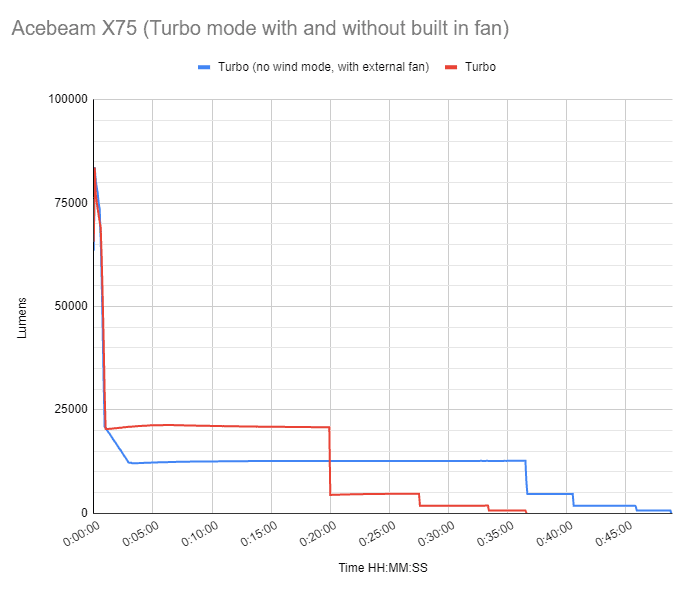
| Mode | Specified | Measured runtime (ANSI FL1) | Time till shut off |
|---|---|---|---|
| Ultra Low | 8h20min | 12h29min | 12h29min |
| Low | 5.5h | 7h32min | 7h32min |
| Mid1 | 2h23min+8min | 2h28min | 2h28min |
| Mid2 | 63min+8min | 1h09min | 1h12min |
| High | 7min+25min+8min | 34min | 43min |
| Turbo* | 30s+20min+8min | 20min | 36min |
| Turbo (no wind) | 20s+70min+8min | 36min | 48min |
Take note that the logging feature is set to a 5-second interval to compare the shortest and longest run times. The lux meter has a short delay while pressing and starting recording. So the manual Lumen measurements may not be 100% the same as the runtime graph in Turbo mode because Turbo output drops so quickly.
ANSI measurements are 10% of the initial measurement. So that means Turbo’s runtime stops when it reaches 7,000 lumens. In my honest opinion, that is still extremely bright, so you better look at the runtime graphs!
ANSI FL1 standards: The runtime is measured until the light drops to 10% of its initial output (30 seconds after turn on). This does not mean that the flashlight is not usable anymore. The last column shows how long the light actually works till it shuts off. If there is a + symbol, the test was stopped at that particular point, but the light was still running. This happens on certain occasions with certain drivers, firmware, or batteries.
Acebeam X75 Peak beam intensity and beam distance measurements
Measurements were taken outdoors at 20 meters for Turbo, and indoors at 5 meters for all modes, with a Hagner E4-X Lux Meter. I noted the highest measurements I could get.. That meant that my 5m measurement was higher than my 20-meter measurement, and therefore, I used that instead of the 20m measurement.
| Mode | Specs | Candela measured | Meters | Yards |
|---|---|---|---|---|
| UltraLow | 5,402 | 1,700 | 82 | 90 |
| Low | 10,712 | 4,900 | 140 | 153 |
| Mid1 | 22,500 | 12,950 | 228 | 249 |
| Mid2 | 43,056 | 28,125 | 335 | 367 |
| High | 96,721 | 59,000 | 486 | 531 |
| Turbo | 330,625 | 197,500 cd | 889 meters | 972 yards |
| *Turbo (highest point) | 330,625 | 223,000 | 944 | 1033 |
I also added the highest Turbo measurement I could get. Just to see if it was close to the advertised beam intensity, and no, it’s not even close.
Extra info: Peak beam distance according to ANSI FL1 standards: The calculated value of distance in meters at which the flashlight produce a light intensity of 0.25 lux. (0.25 lux is about the brightness of a full moon shining on an object).
Acebeam X75 vs Imalent MS18 etc
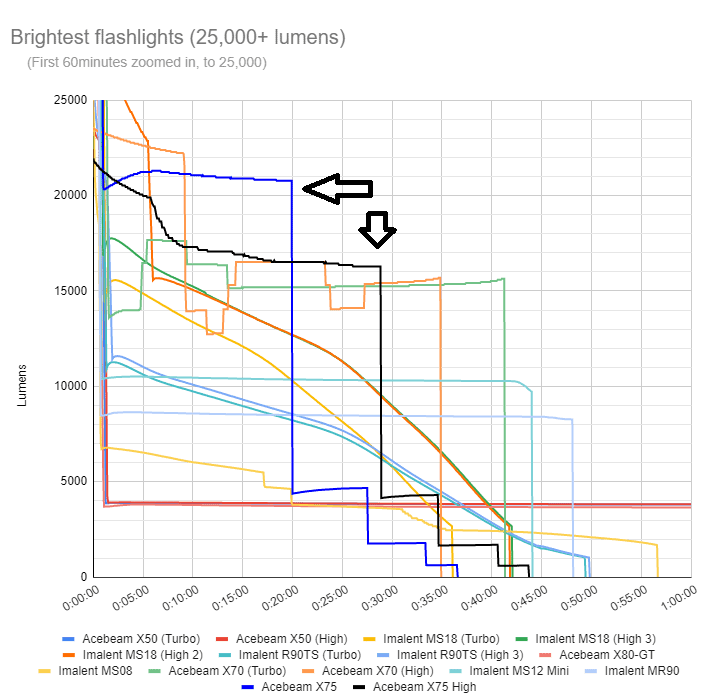
As you can see, the X75 has an amazing high sustained runtime. That’s just insane! With over 20,000 lumens for 20 minutes, and High mode still has over 16000 lumens at 28 minutes.
Compared to other powerful flashlights
Below is a list of the brightest flashlights we have reviewed with an output of over 50,000 lumens.
The following list contains our own measurements and not the manufacturer’s specs. The maximum output is usually measured at turn on, but sometimes after a couple of seconds. The 30-second measurement is according to ANSI FL1 standards, and the 10-minute measurement indicates its sustained output. Discontinued flashlights will be removed from the list.
| Flashlight | Max. Output | 30 sec | 10 minutes |
|---|---|---|---|
| Acebeam X75 | 83,607 | 73,716 | 21,061 |
| Haikelite HK08 | 64,447 | 59,727 | 3,985 |
| Imalent MR90 | 52,326 | 32,128 | 8,574 |
| Imalent MS08 | 25,745 | 19,615 | 6,049 |
| Imalent MS12 Mini | 68,773 | 46,750 | 10,454 |
| Imalent MS18 | 101,626 | 69,879 | 13,365 |
| Imalent MS32 | 179,678 | 166,133 | 37,396 |
| Imalent SR16 | 53,657 | 43,115 | 8,956 |
| Imalent SR32 | 101,532 | 91,014 | 17,960 |
| Flashlight name | Lumens | Lumens | Lumens |
Hover your mouse over any particular line in the following graphs to see data points! Or select a flashlight at the bottom of the graph to highlight that particular graph.
Are you on a mobile phone? Hold your phone horizontally.
(Interactive graphs)
Full runtimes:
Or check this link to view the full interactive chart.
Zoomed in for the first 10 minutes
Or check this link to view the 10 minutes interactive chart.
Beamshots
For the following beamshots I used a Canon EOS 5D Mk2 and a 50mm lens. manual settings: ISO1600, 1/4sec , F4, 5000K
The shed is about 65 meters / 71 yards away, and the reflective fence is 200 meters.
Compared to the following flashlights:
- Acebeam X75
- Acebeam X70
- Imalent MS18
- Imalent RS50
- Manker MK38
- Imalent MR90

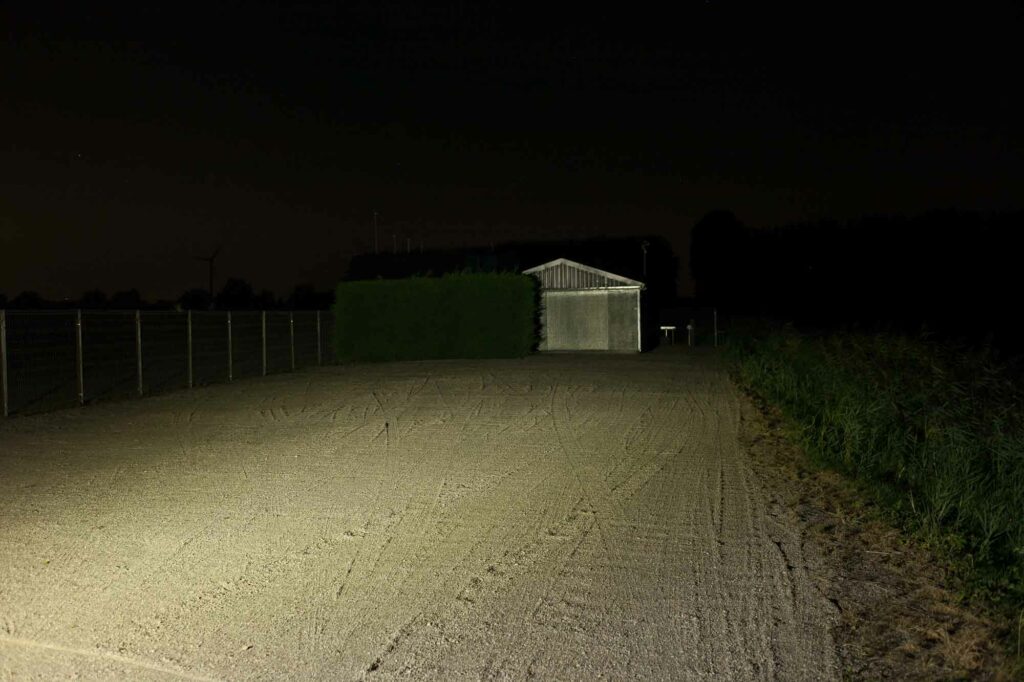
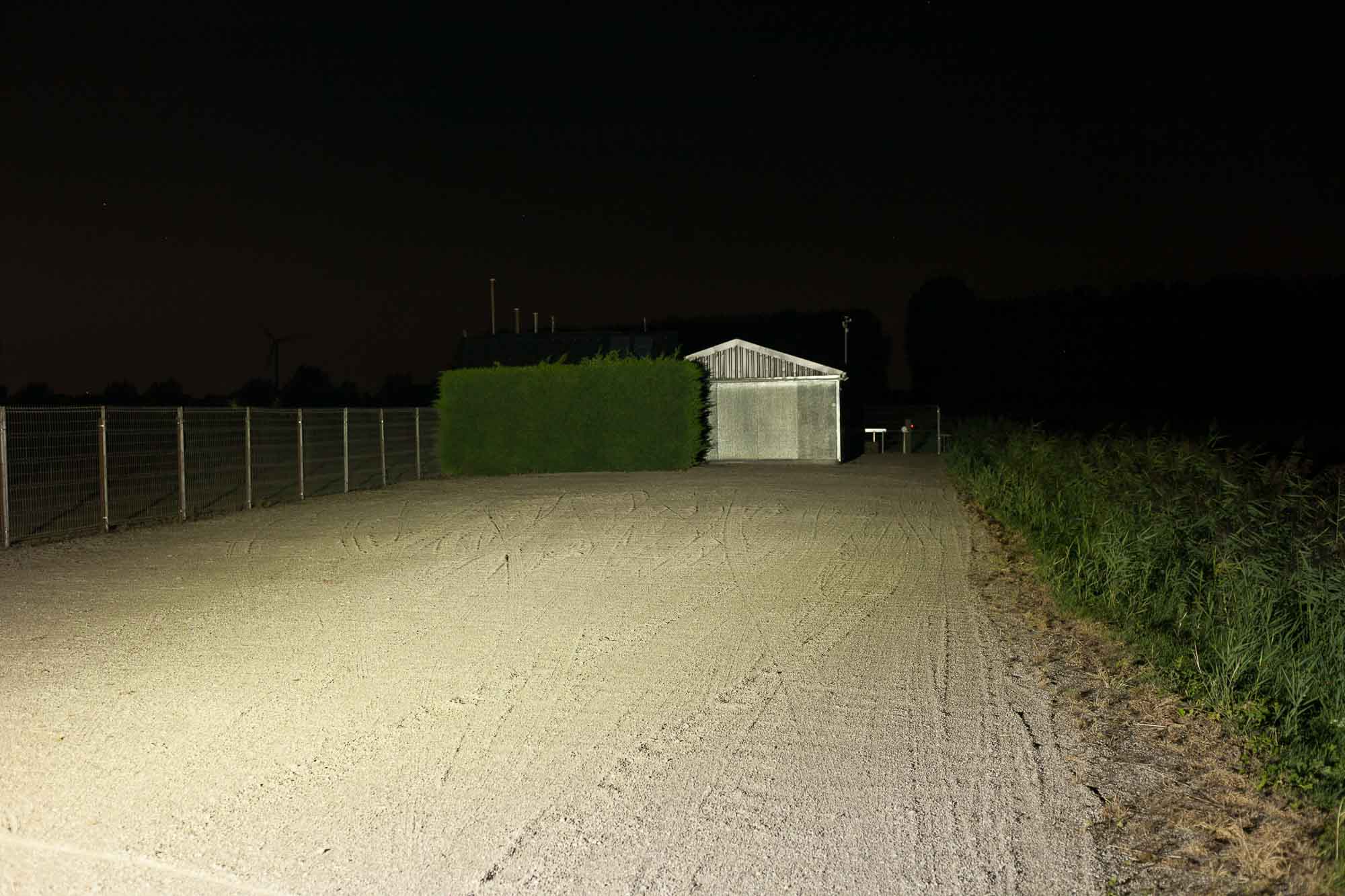
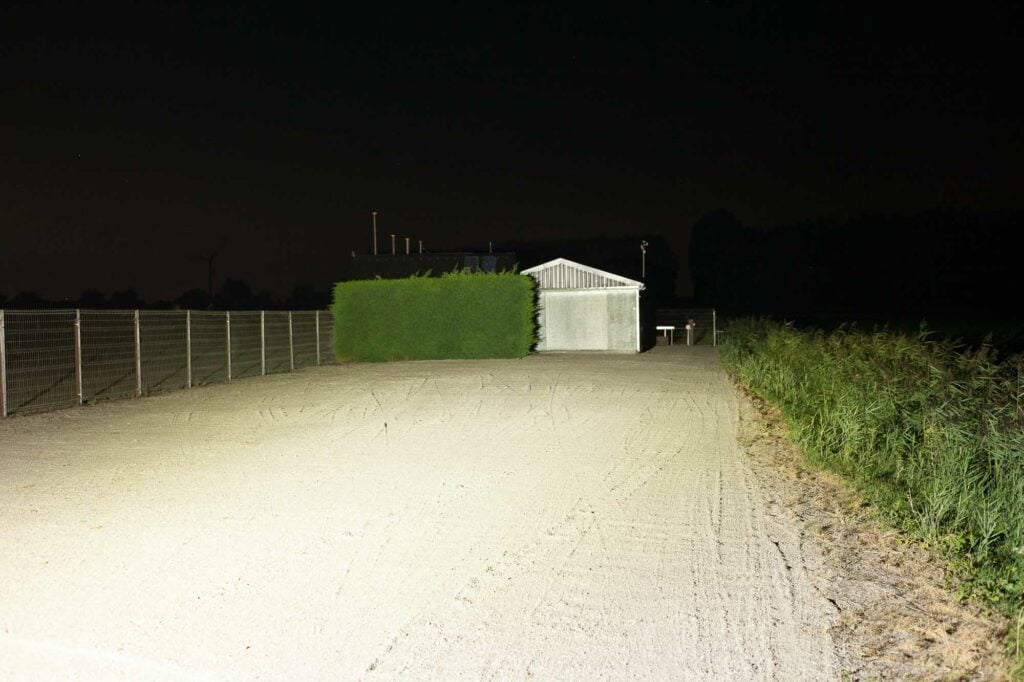
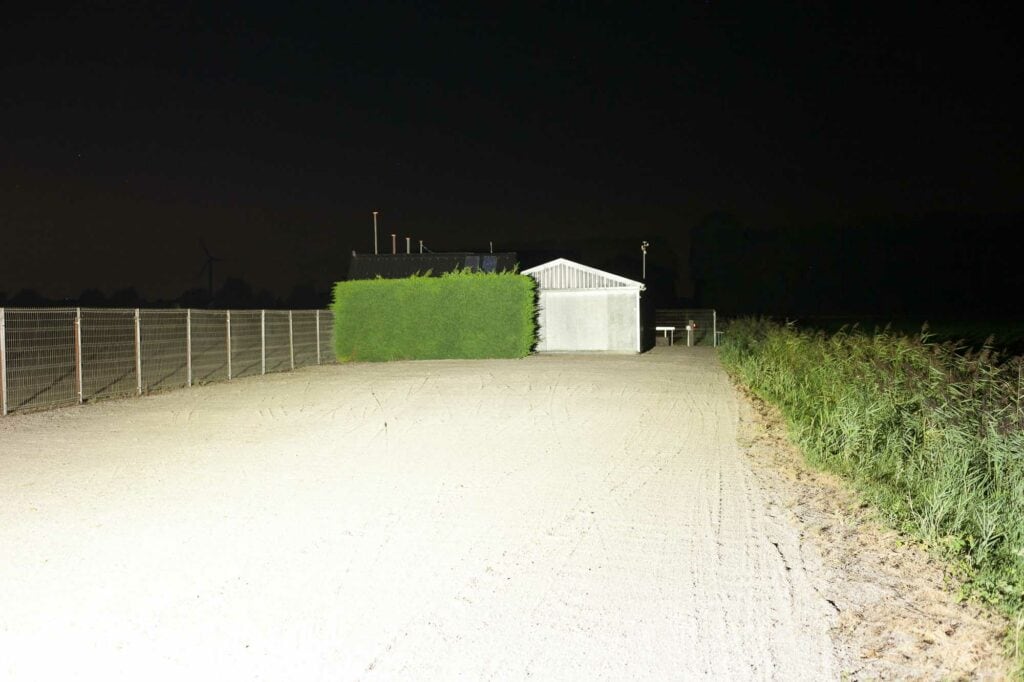
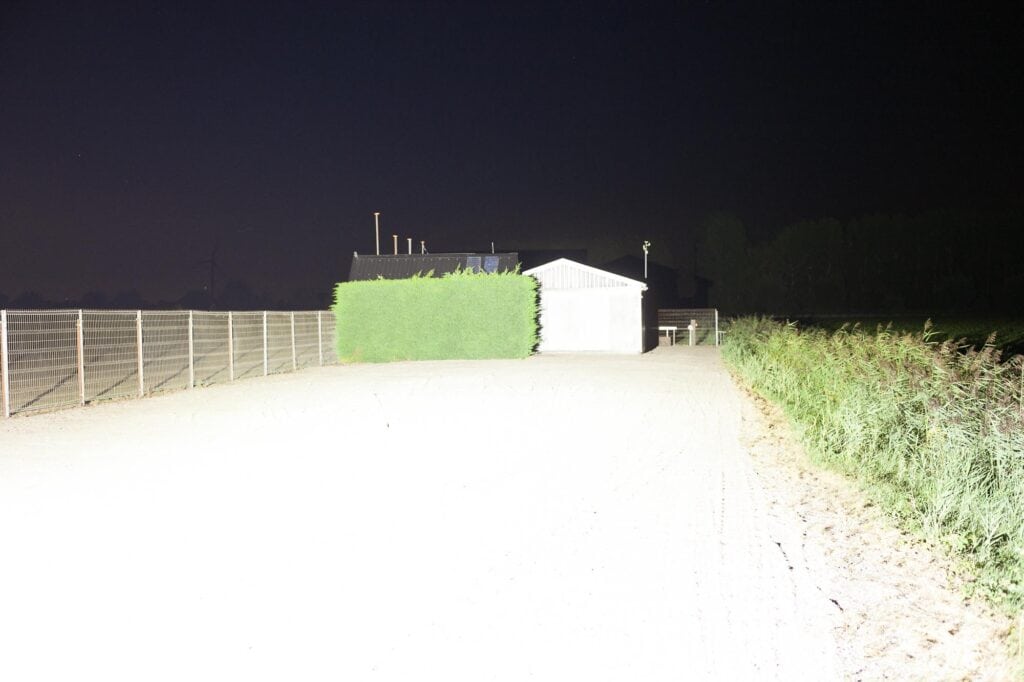
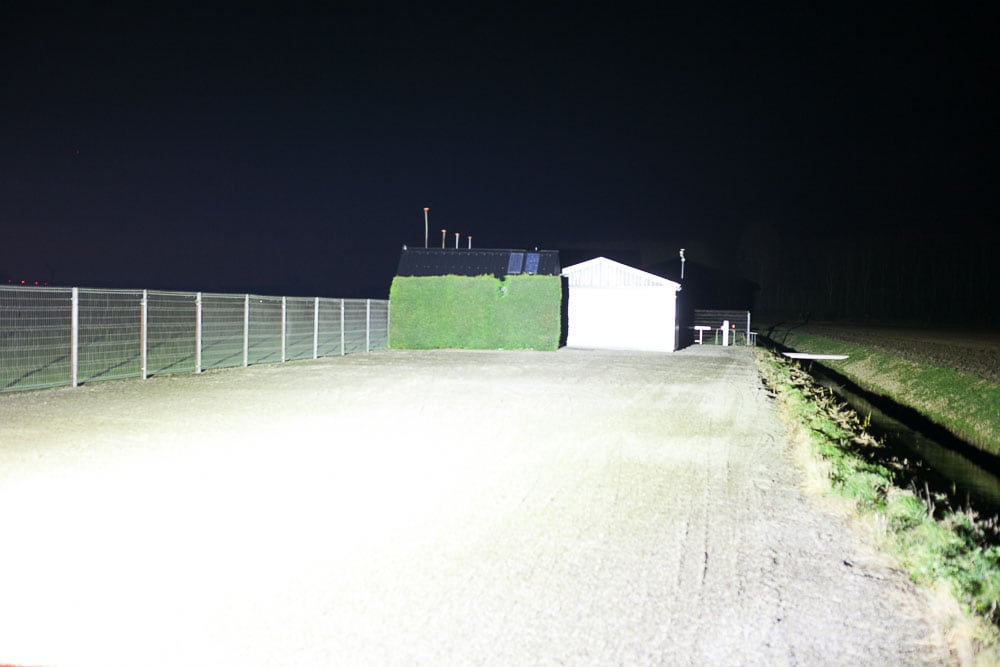
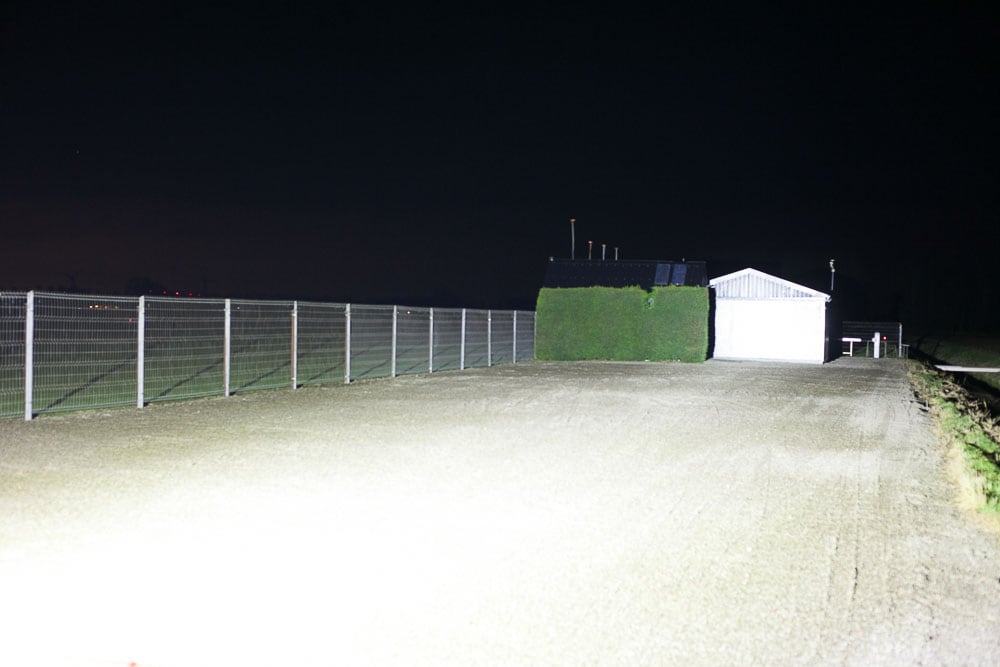
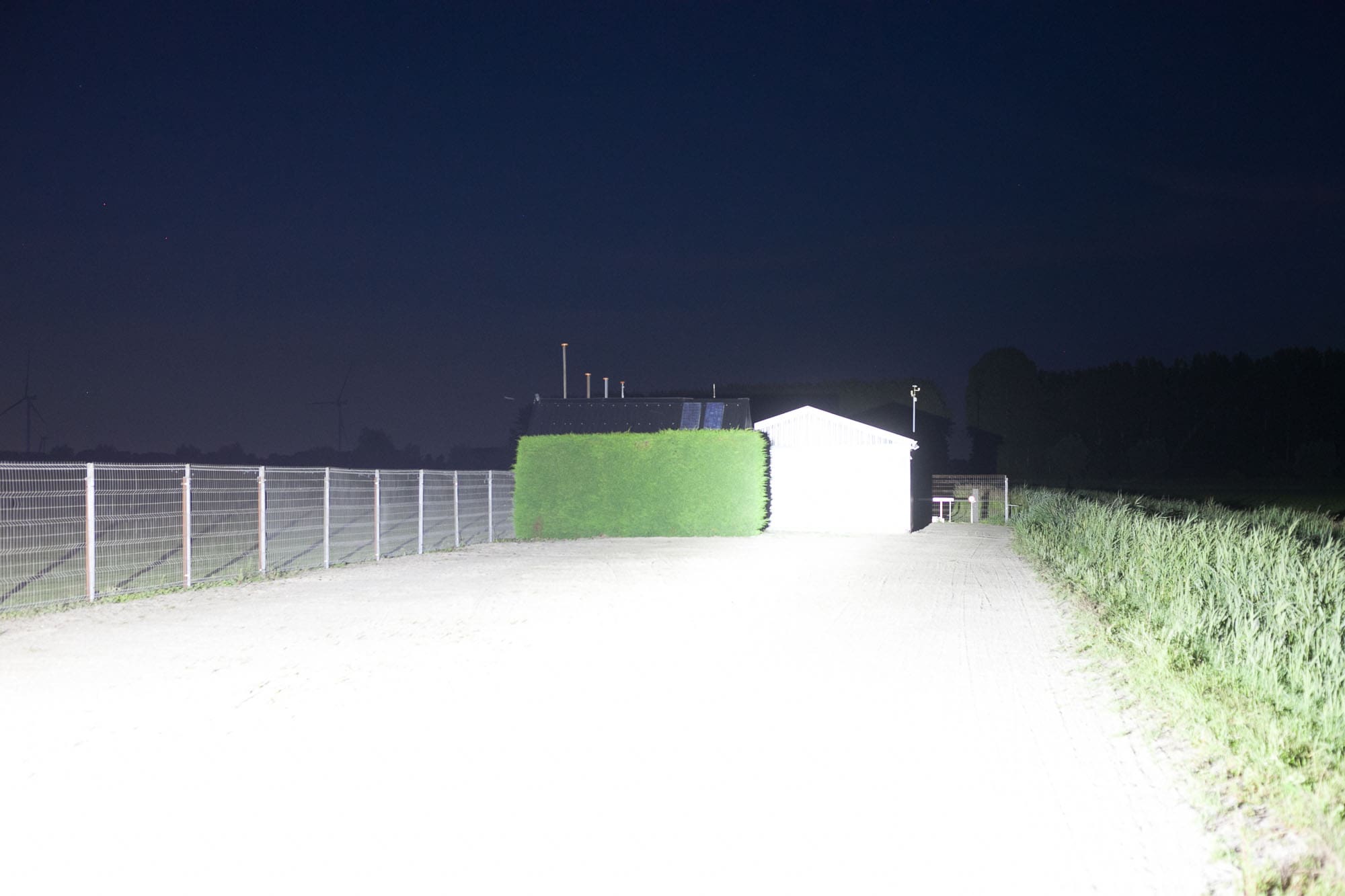
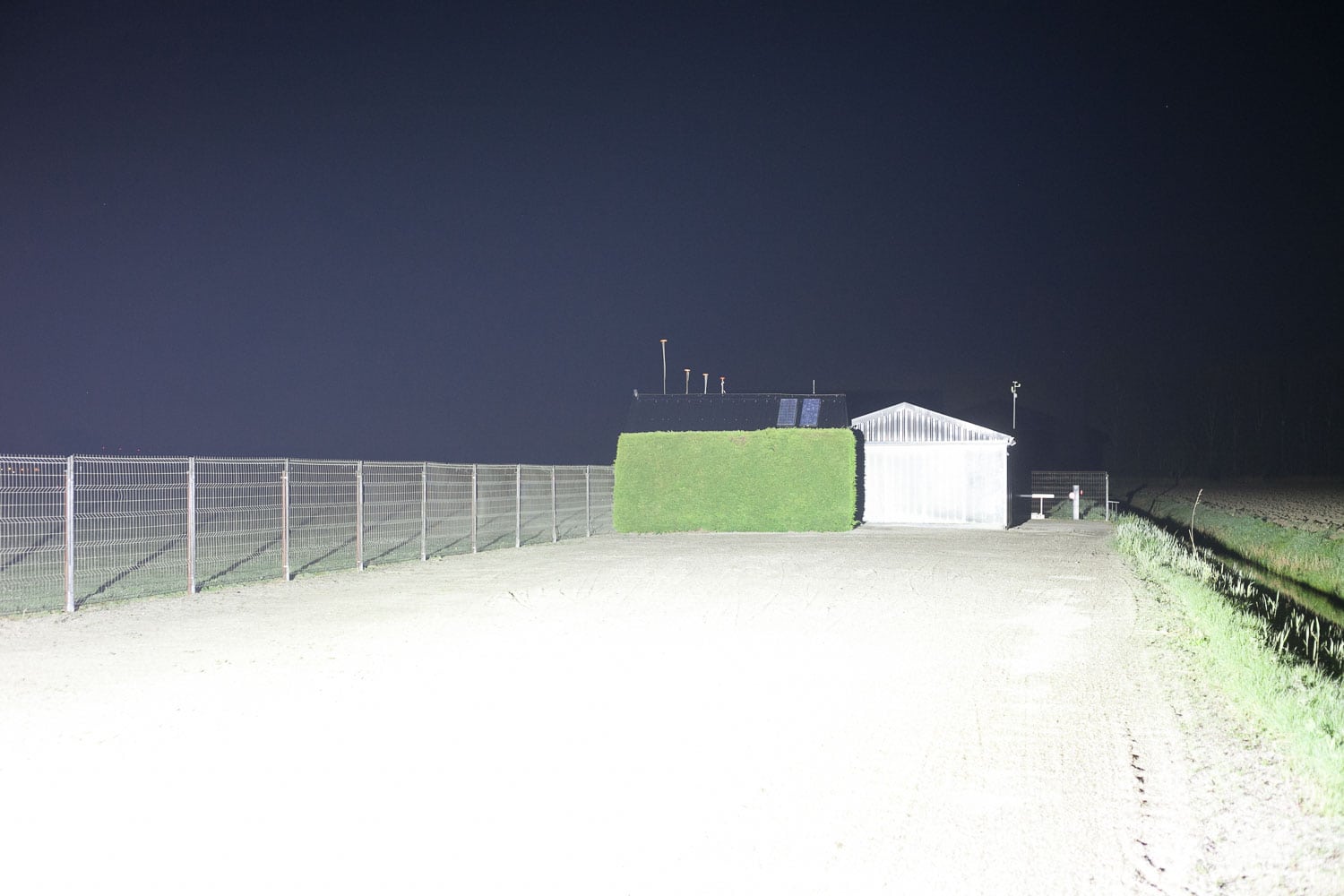
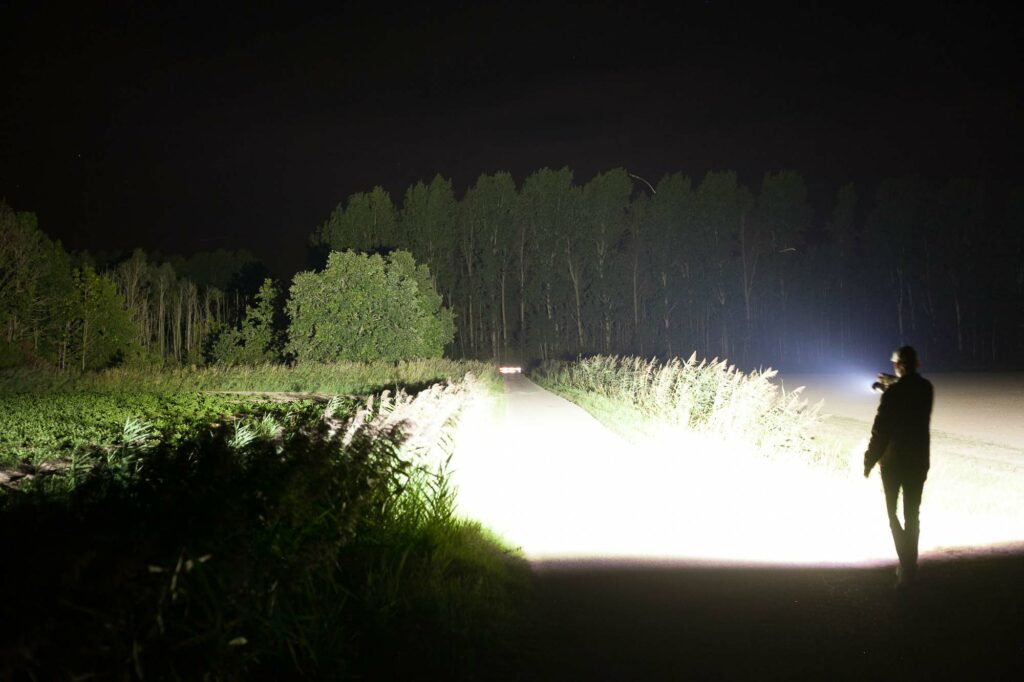

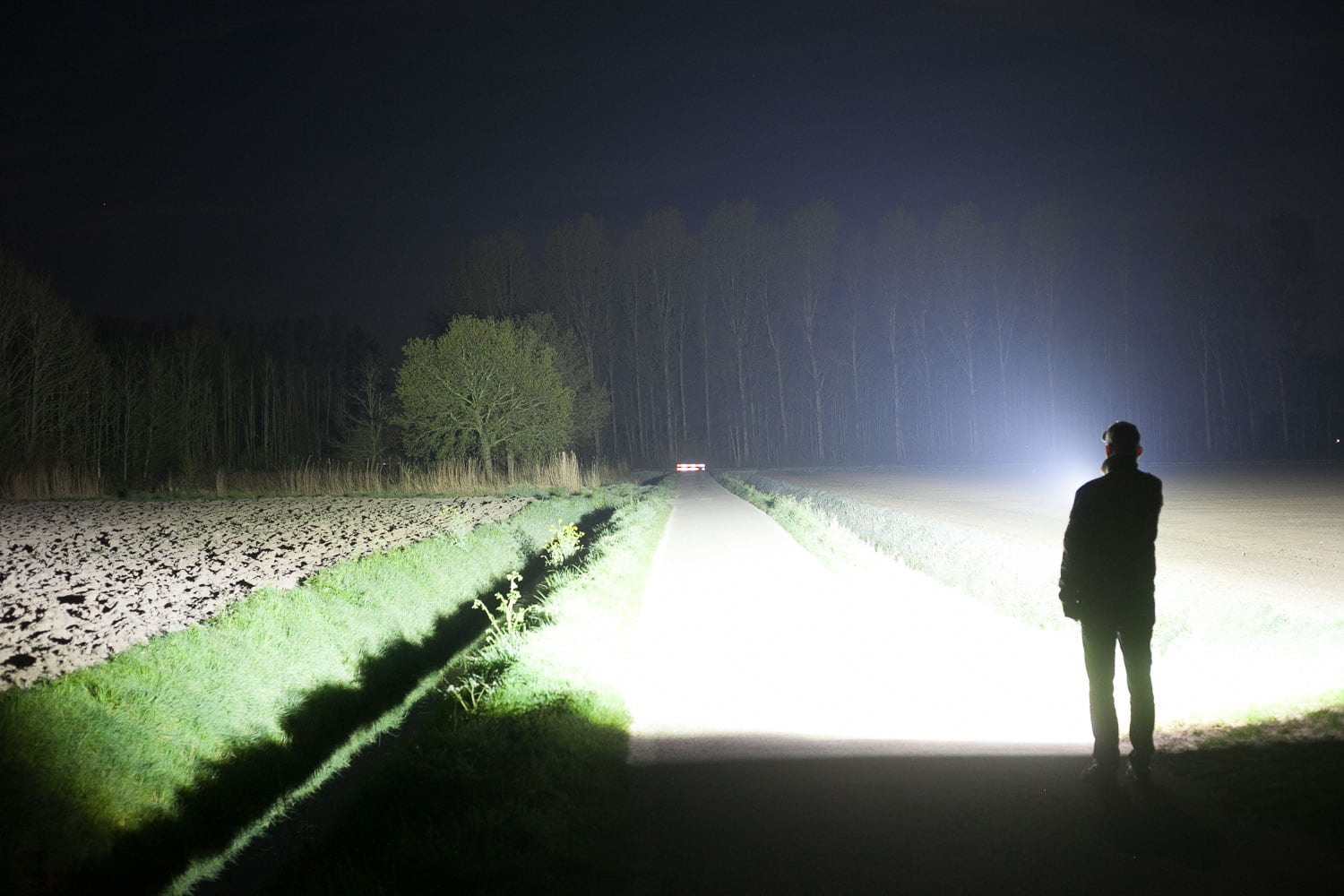
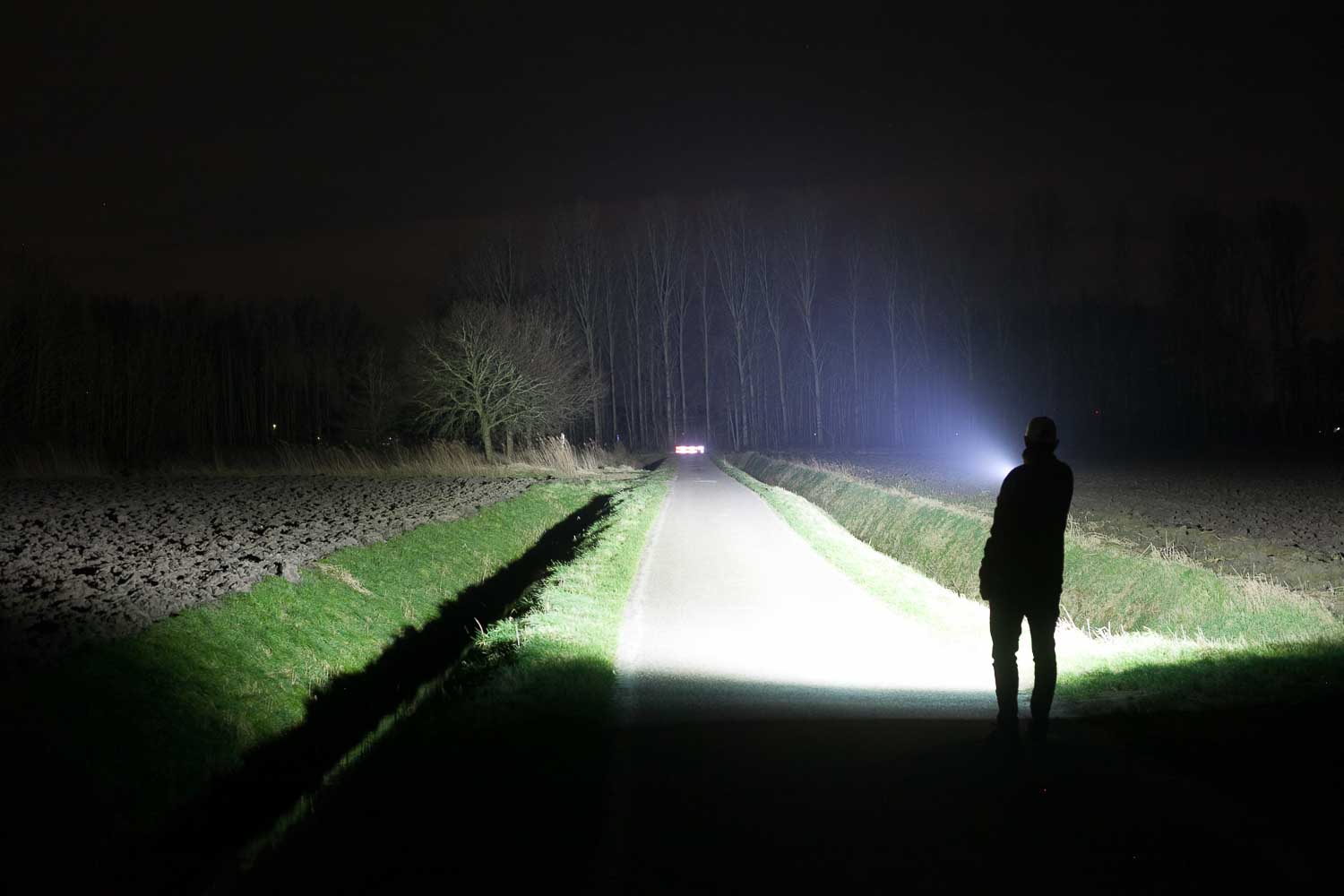
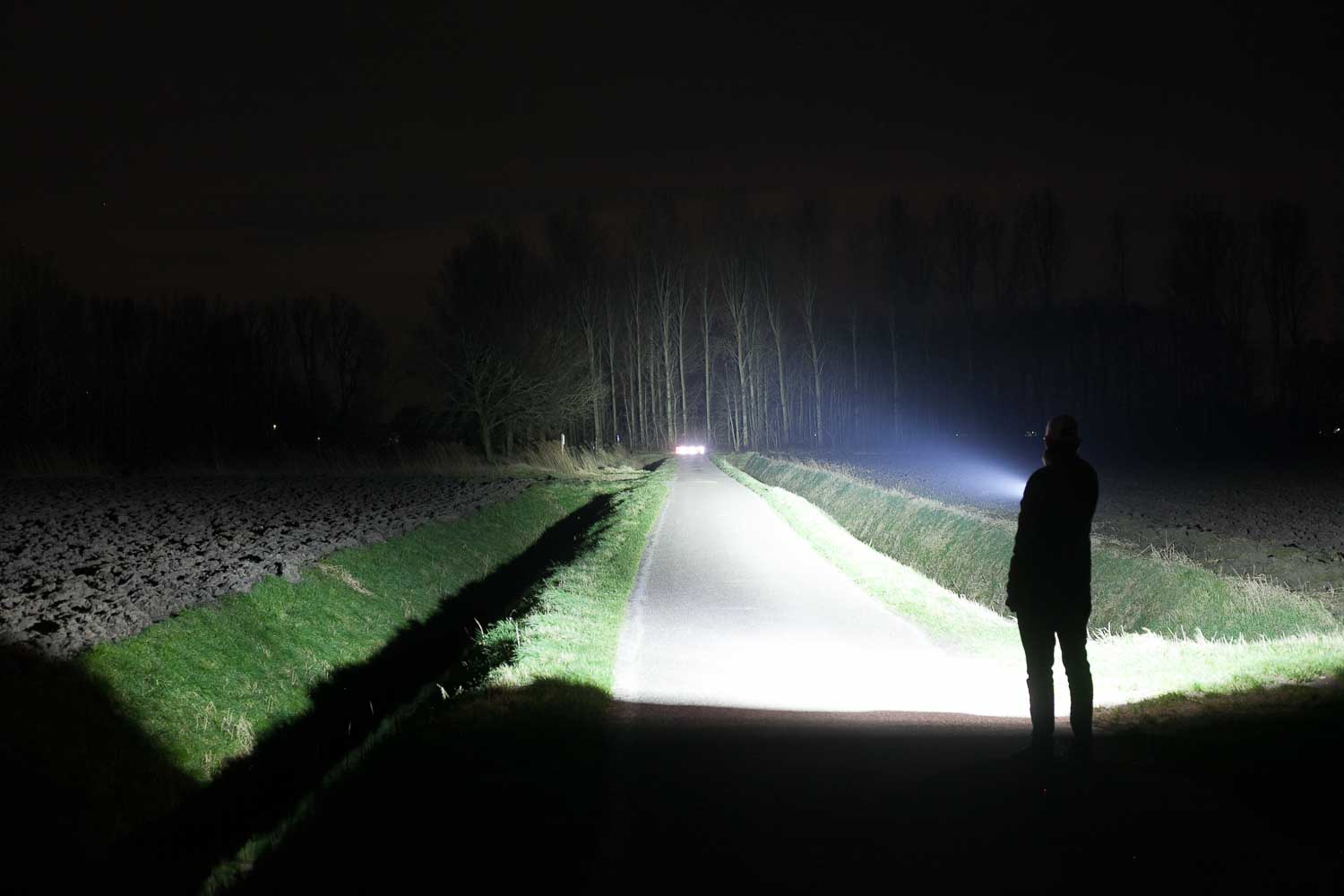
Disclaimer: This flashlight was sent to me for review at no cost by Acebeam. I have not been paid to review, nor have I been holding back on problems or defects.
Final Verdict
Pros
- Fast USB-C PD charging (65watts)
- Extremely bright
- Silicone sleeve that protects the bezel and front of the flashlight
- Replaceable cooling fan
- Built-in powerbank
- Very high sustained output
- One-handed operation with switches built into handle
- Wind mode (fan) is not very loud and is controlled by temperature rather than time/mode. It turns off when the temp is low enough.
- Instant access to Turbo, Ultra Low, and Strobe
Cons
- ECO mode group is not very useful, it looks the same as Power mode.
- The flashlight demands a lot of power from just 4 batteries. I’d prefer to see an 8-battery pack, to reduce the stress on the batteries and extend their lifetime.
- Exaggerate beam intensity/beam distance
- You need to get used to timing/pushing the switch to enter Turbo mode from Off. But this will not take very long to get used to. Just an observation.
Explanation on star ratings:
1: Avoid: my phone flashlight would be a better choice – 2: Poor: significant defect or issues; almost unusable – 3: Average: some defects or issues; but still usable 4: Good: recommended (minor issues) – 5: Great: highly recommended
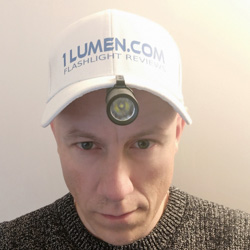
5 stars: ★★★★★
I was doubting whether to give it 4.5 stars or 5 stars. It has a few small cons, but its performance and features are very well executed. … well, except for maybe the Eco mode group.
It’s extremely powerful, has quick charging, a power bank features, extremely high sustained output, and much more. That makes the X75 a very serious lumen monster!
Buy Acebeam X75 with a 15% discount
Get a whopping 15% off your next order at Acebeam.com with the following discount coupon: AE15. Simply add the coupon code at your checkout.
1lumen selects and reviews products personally. We may earn affiliate commissions through our links, which help support our testing.